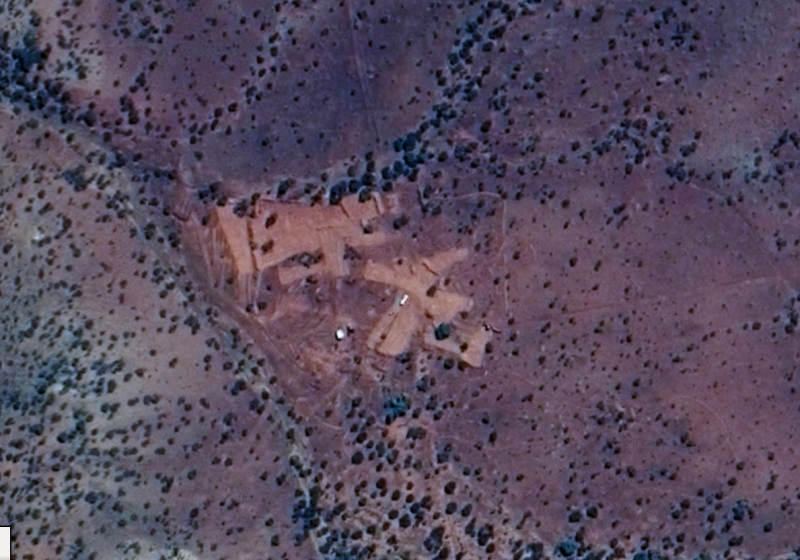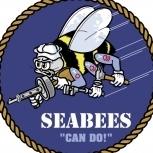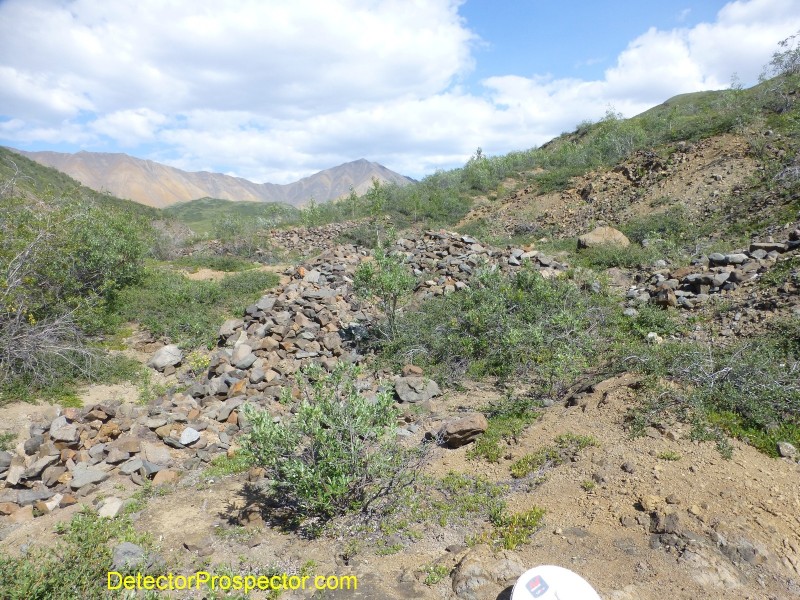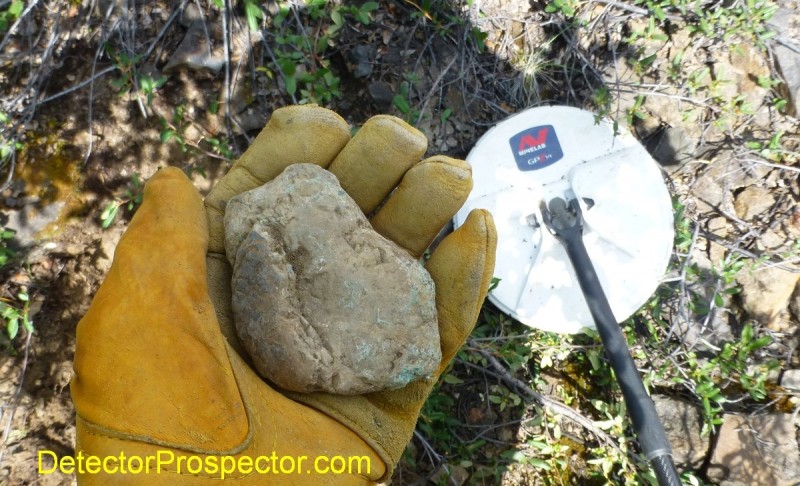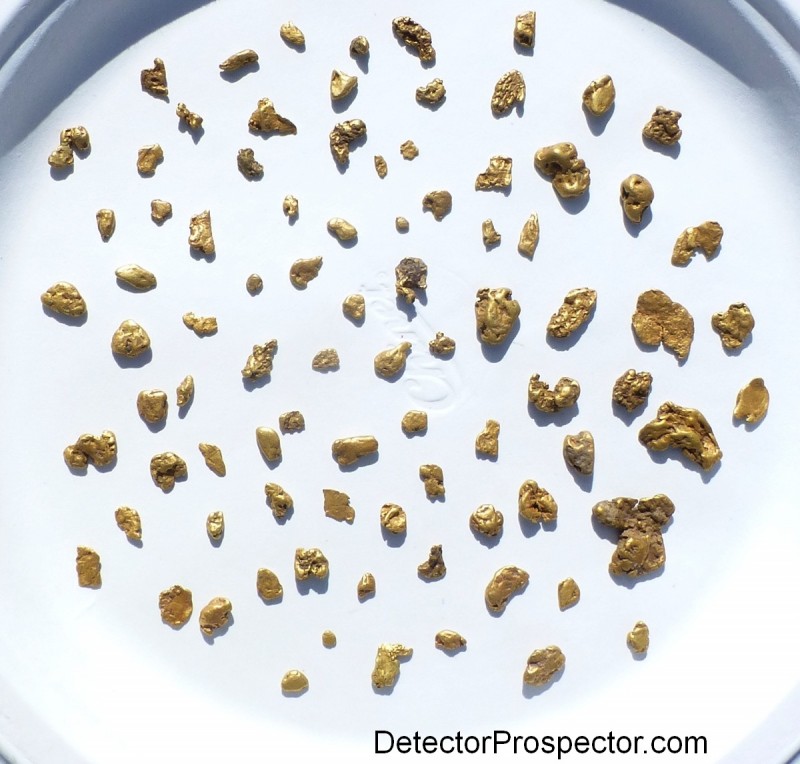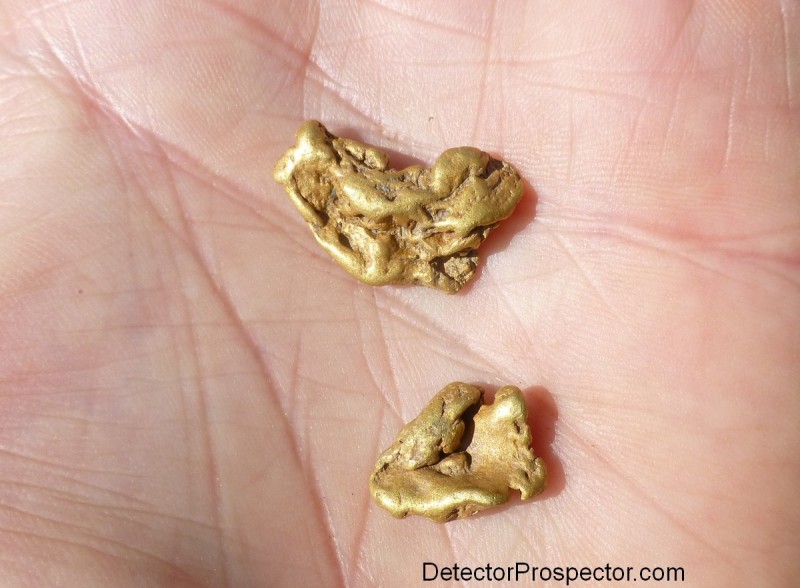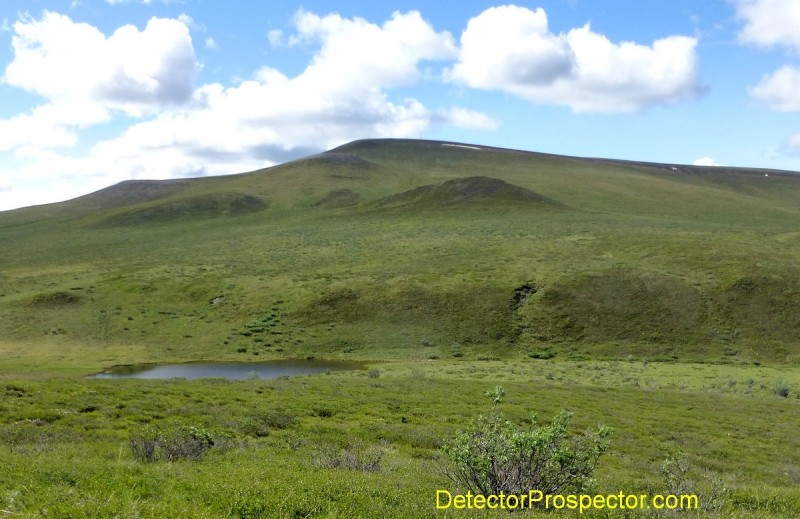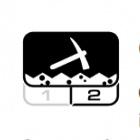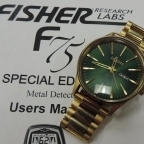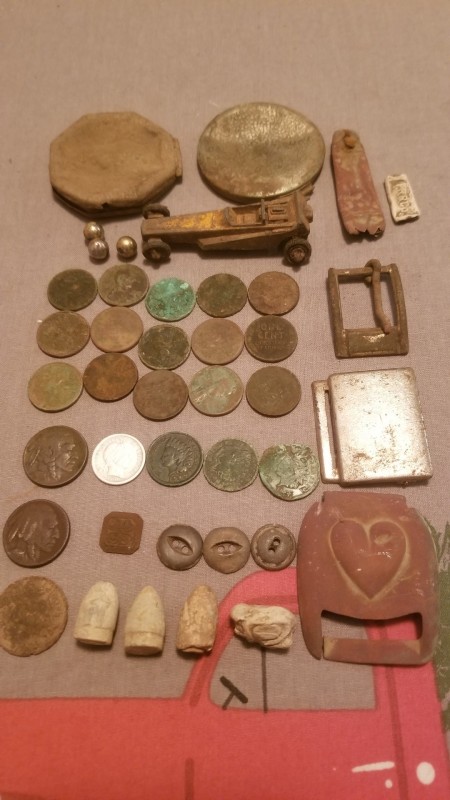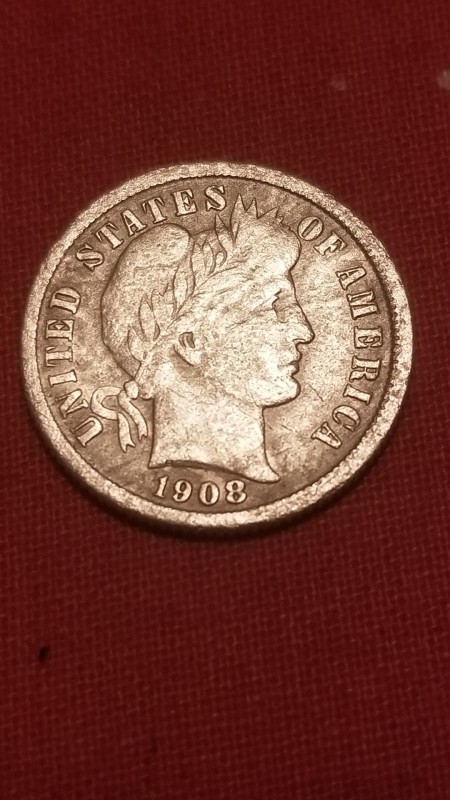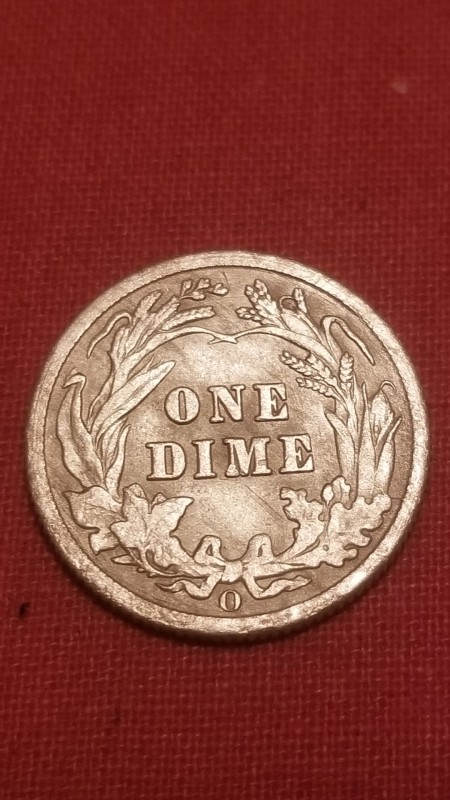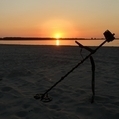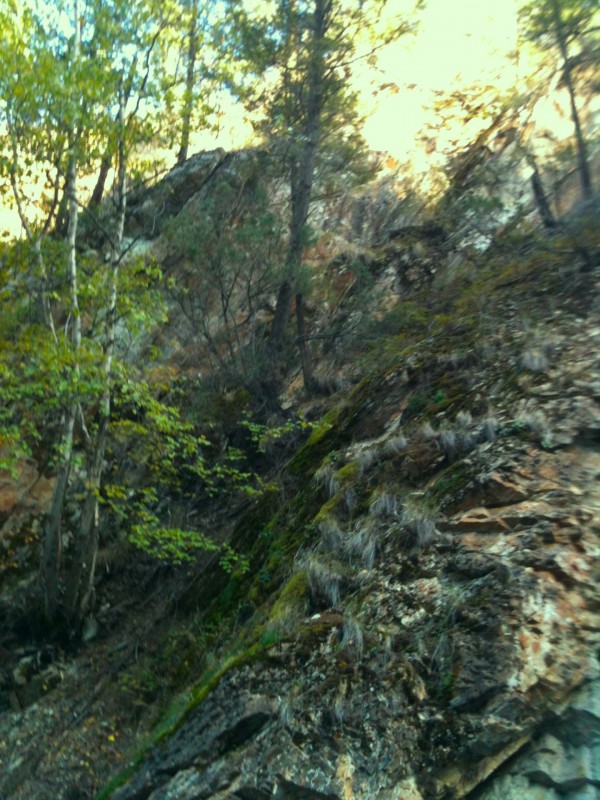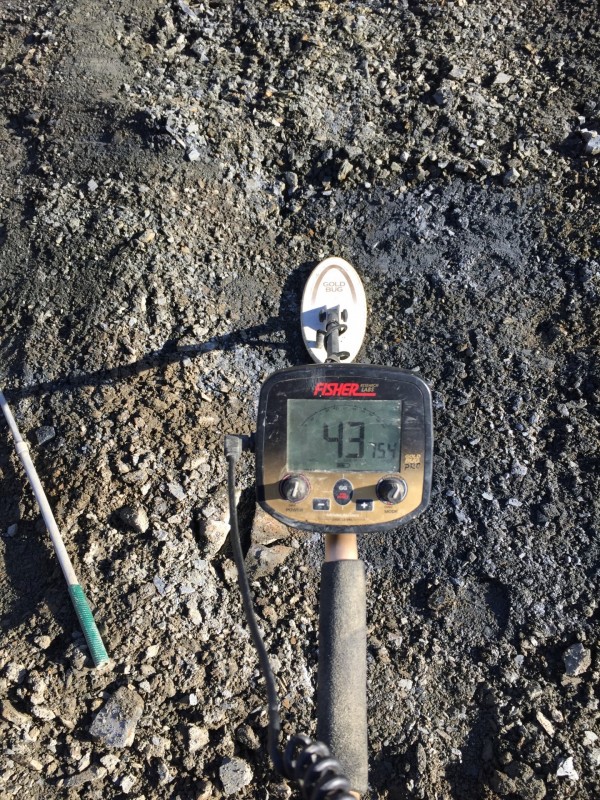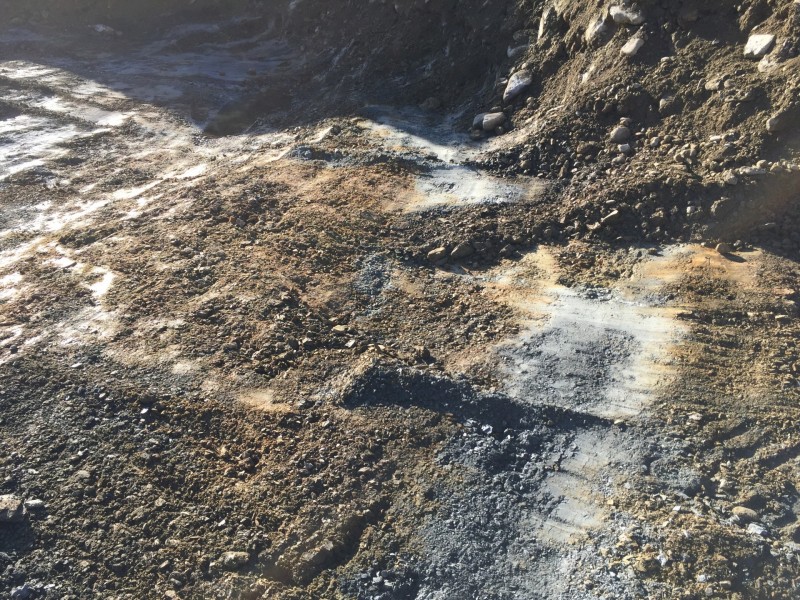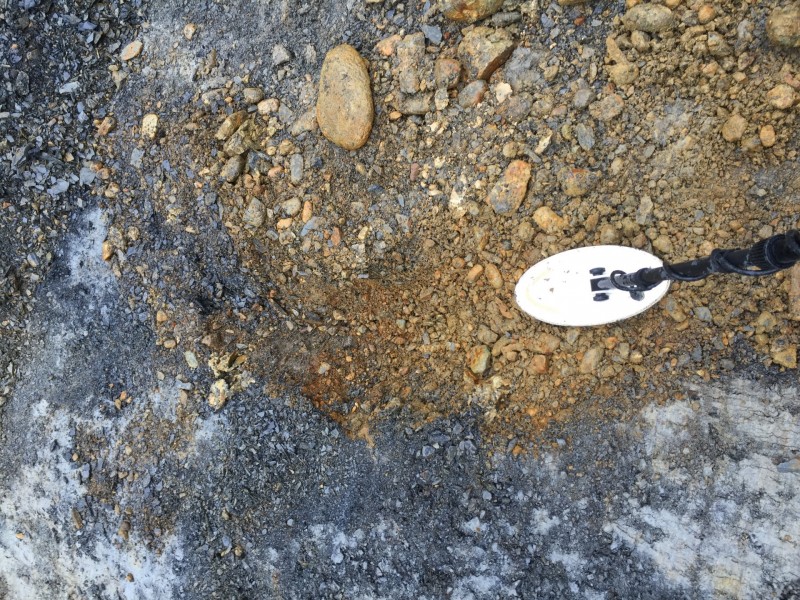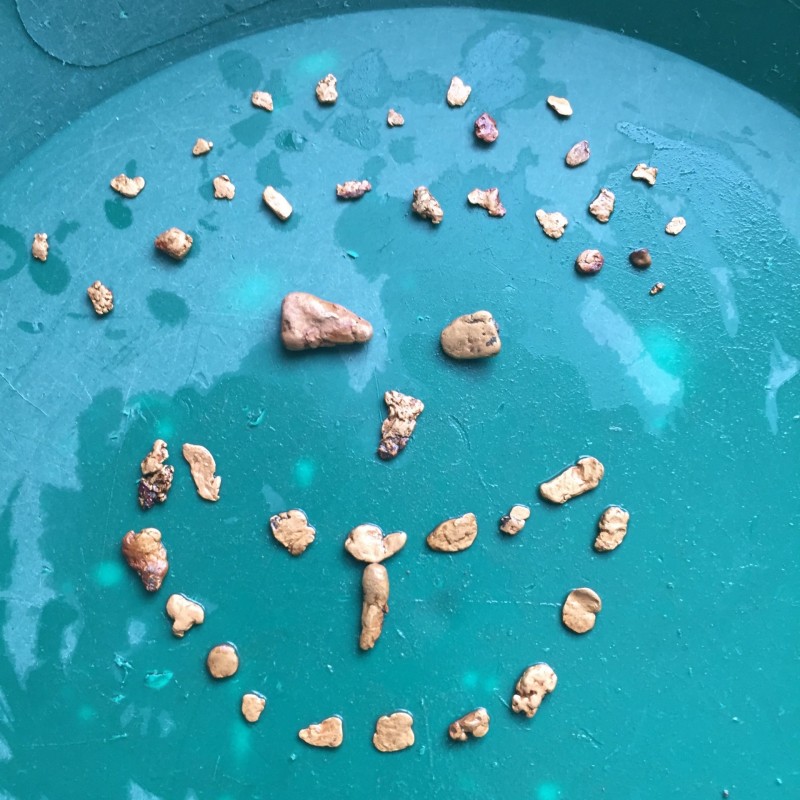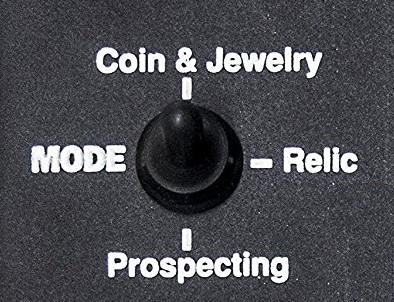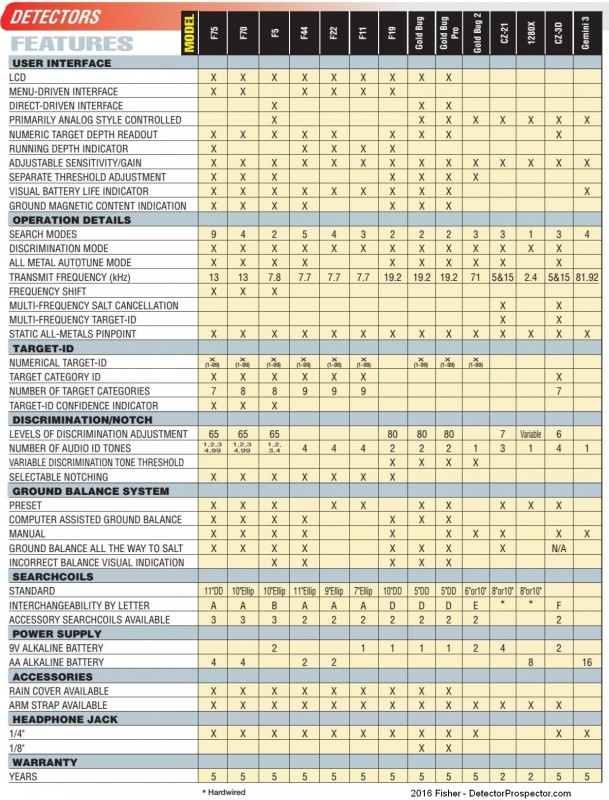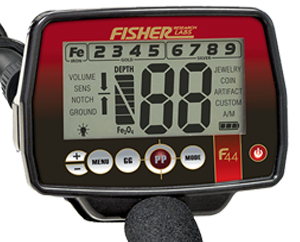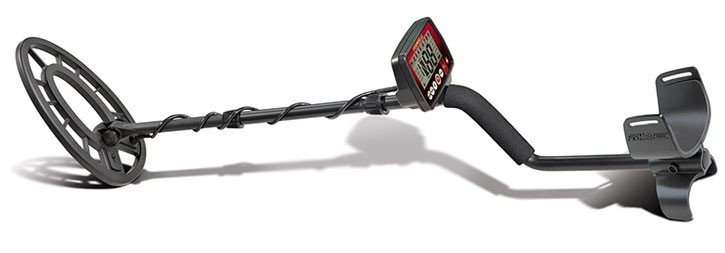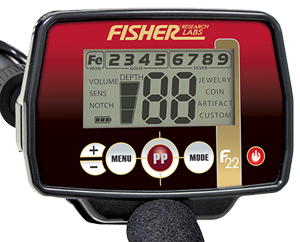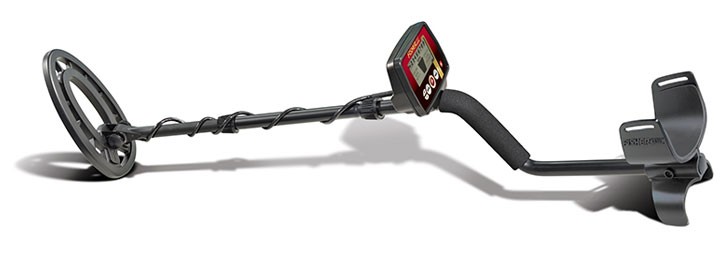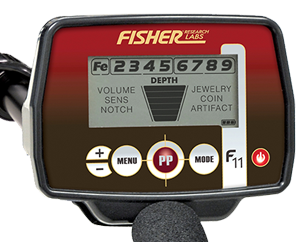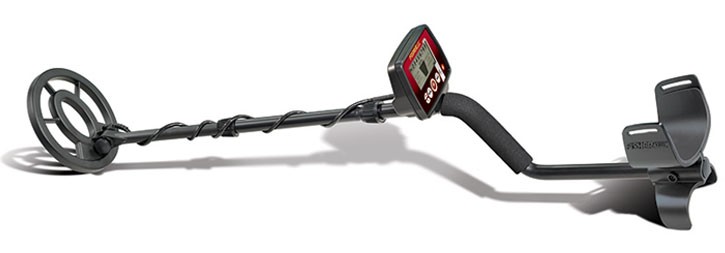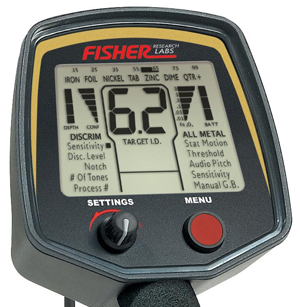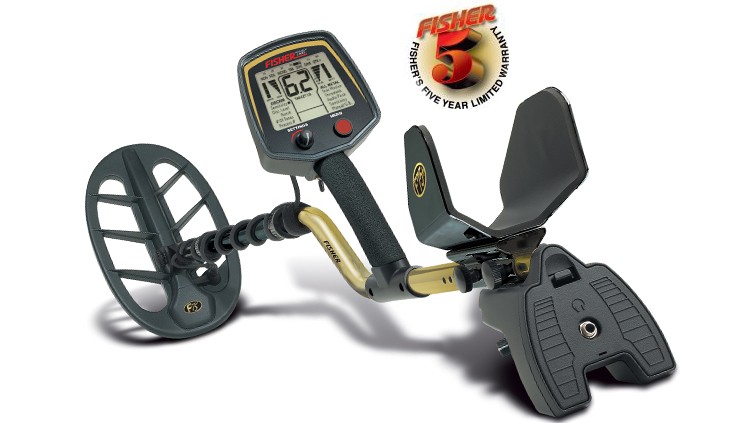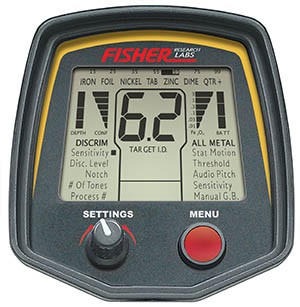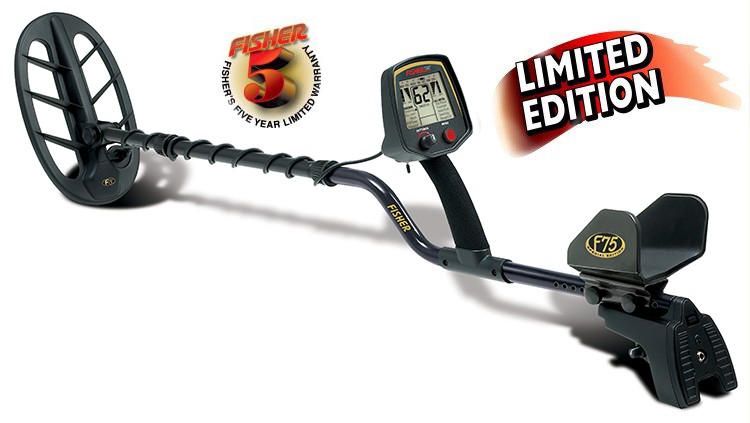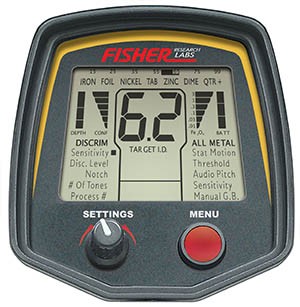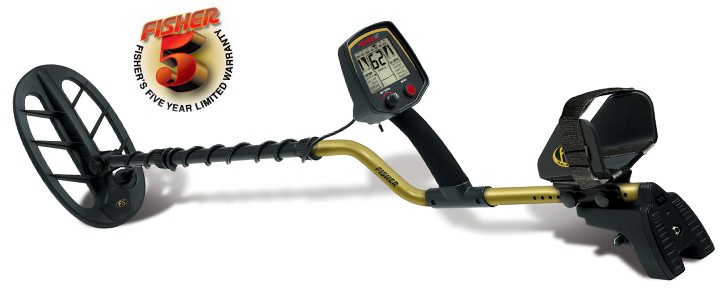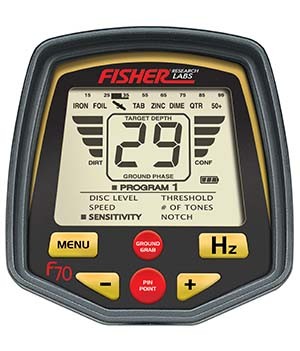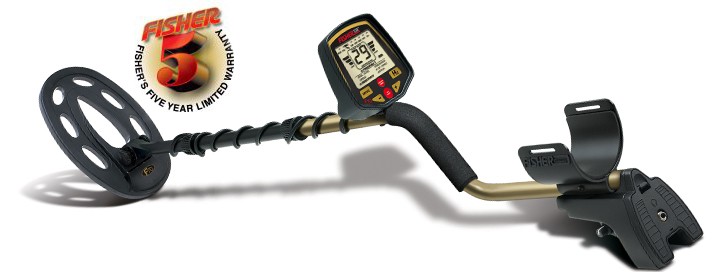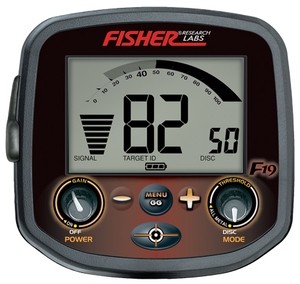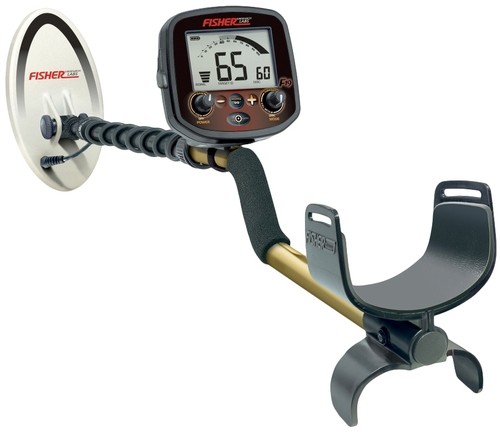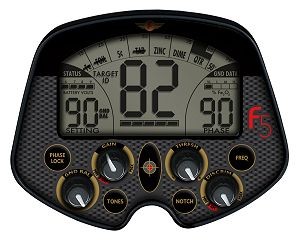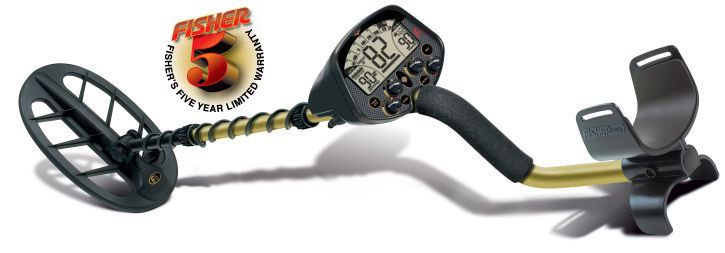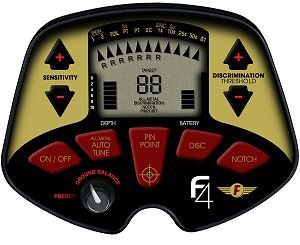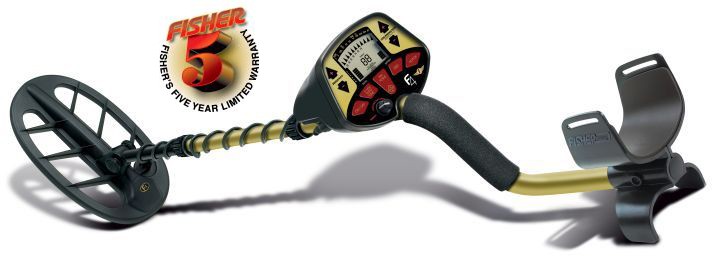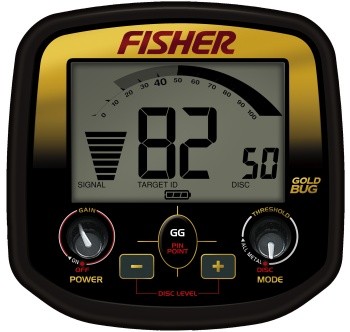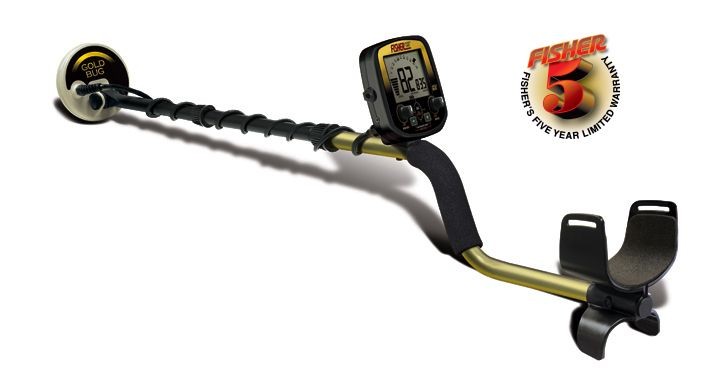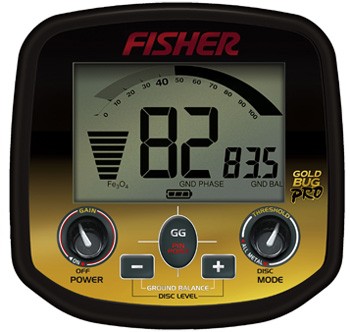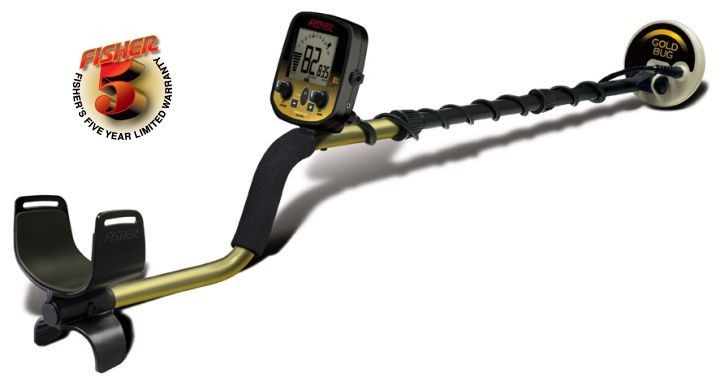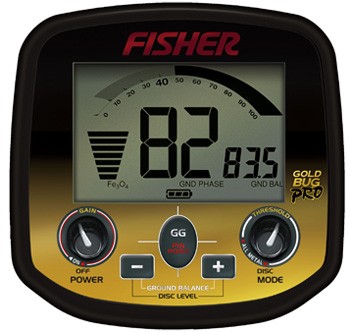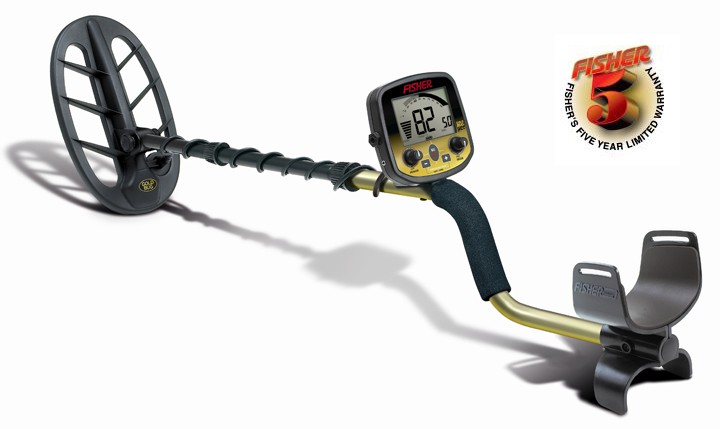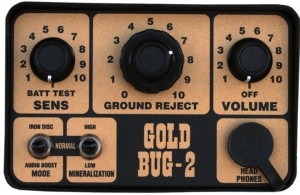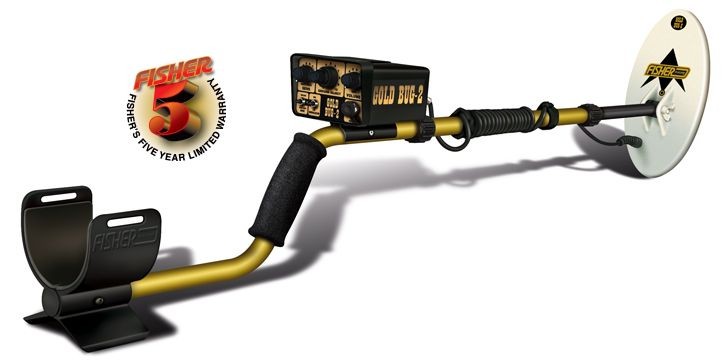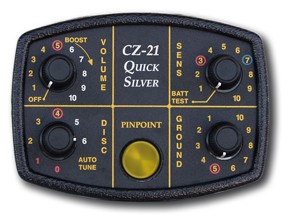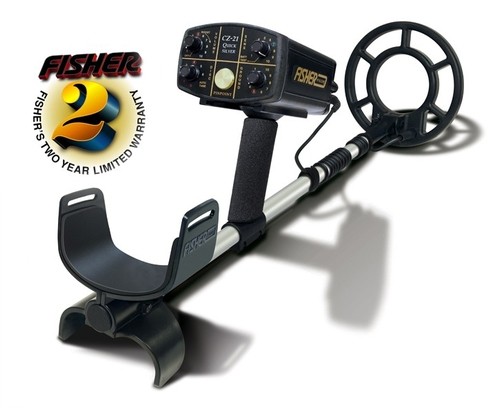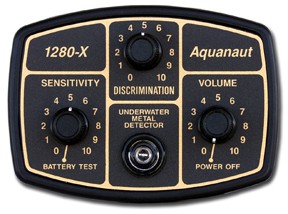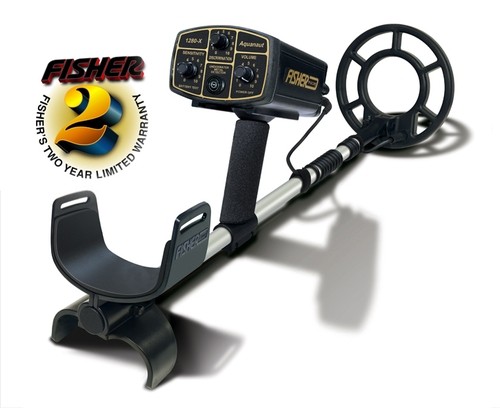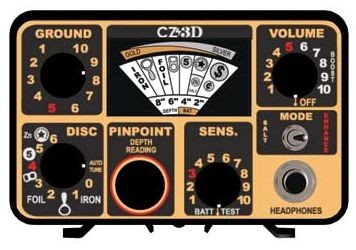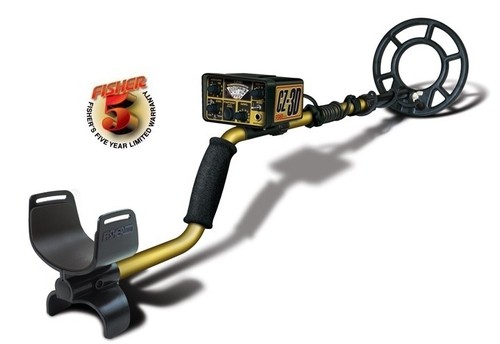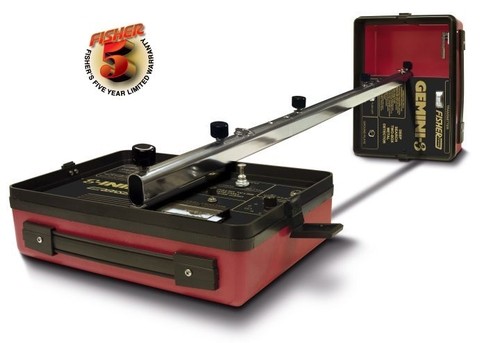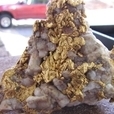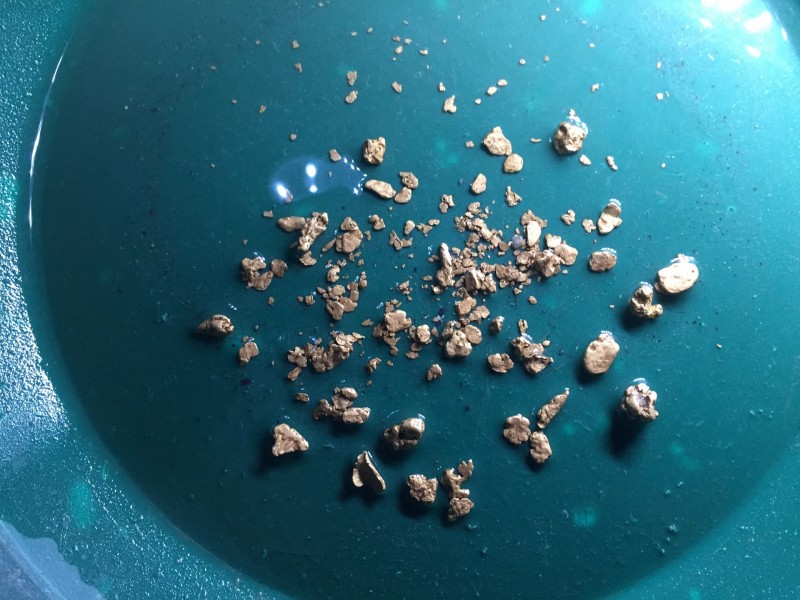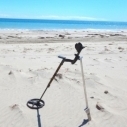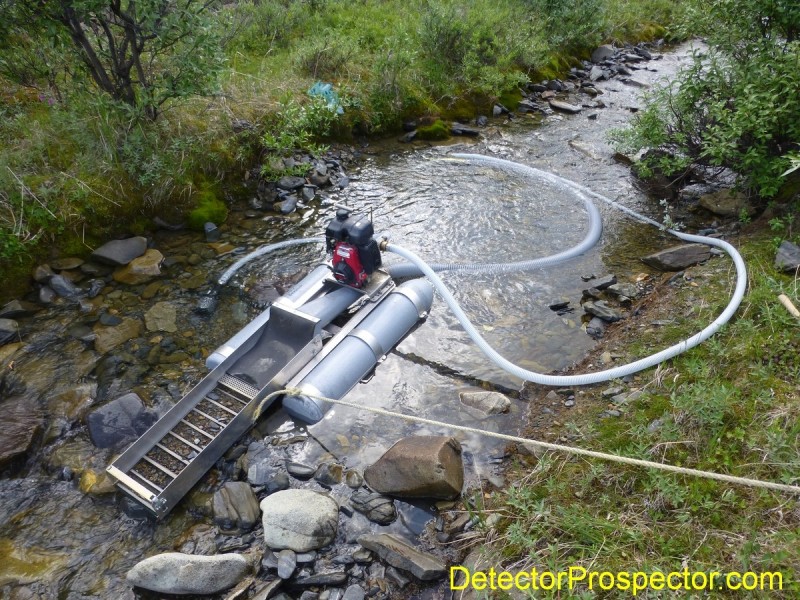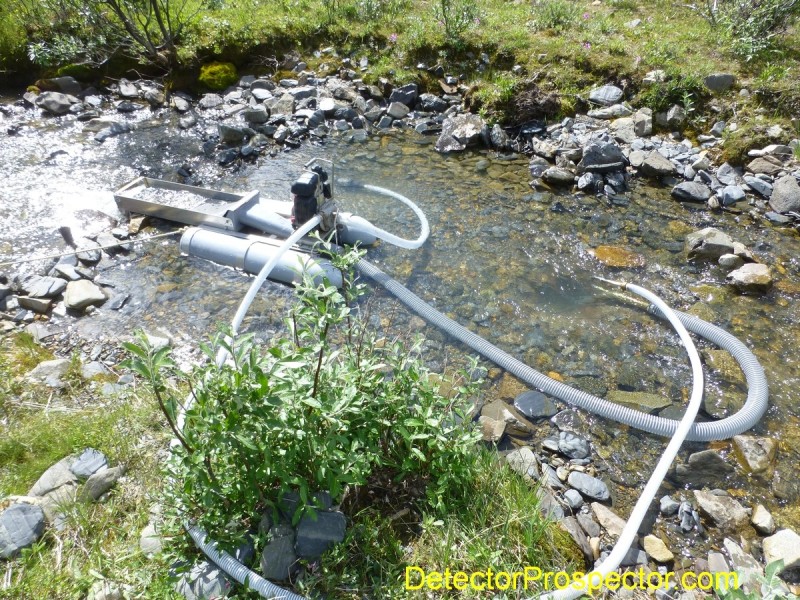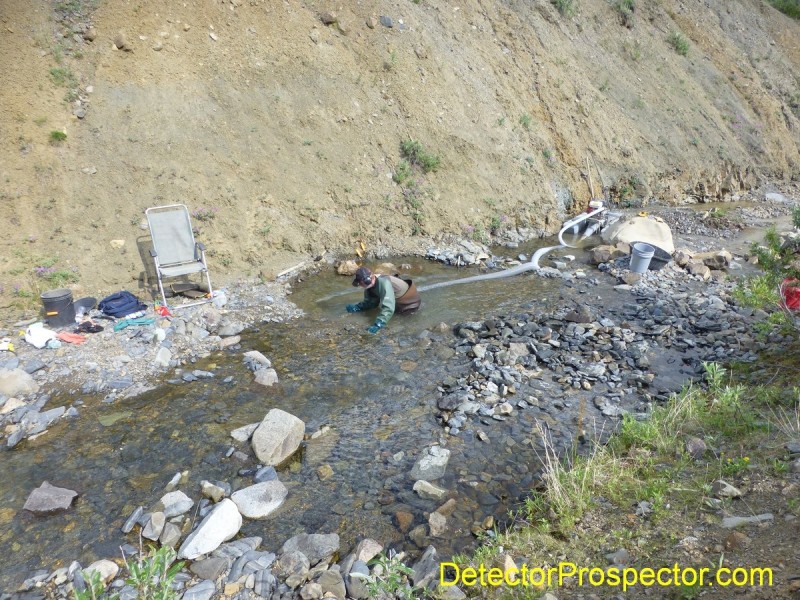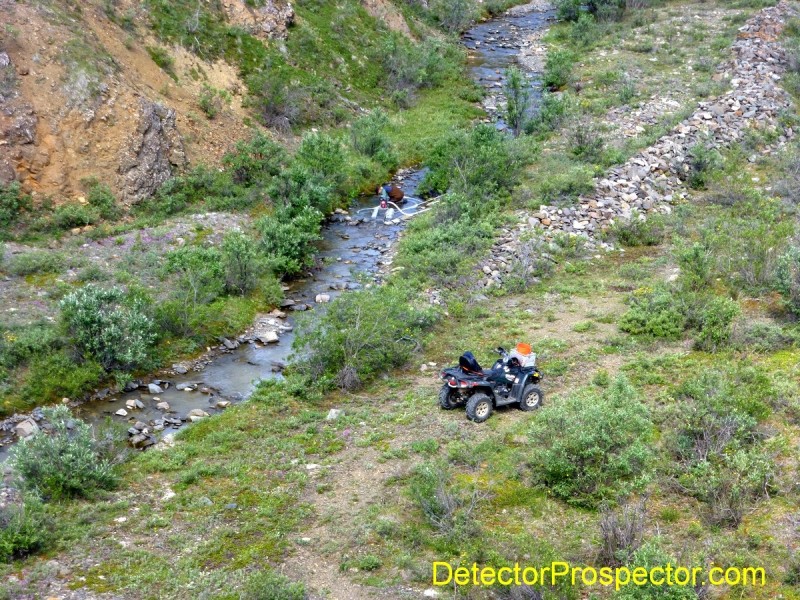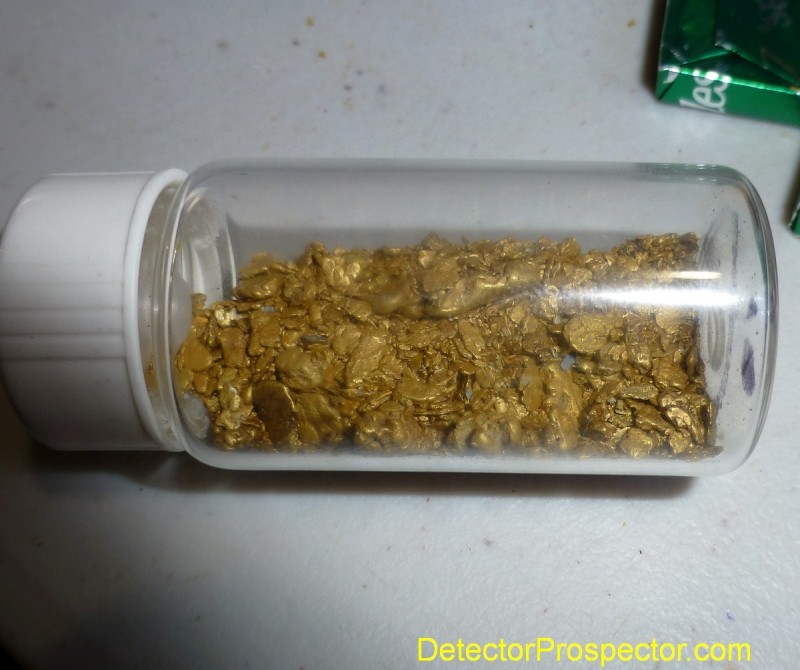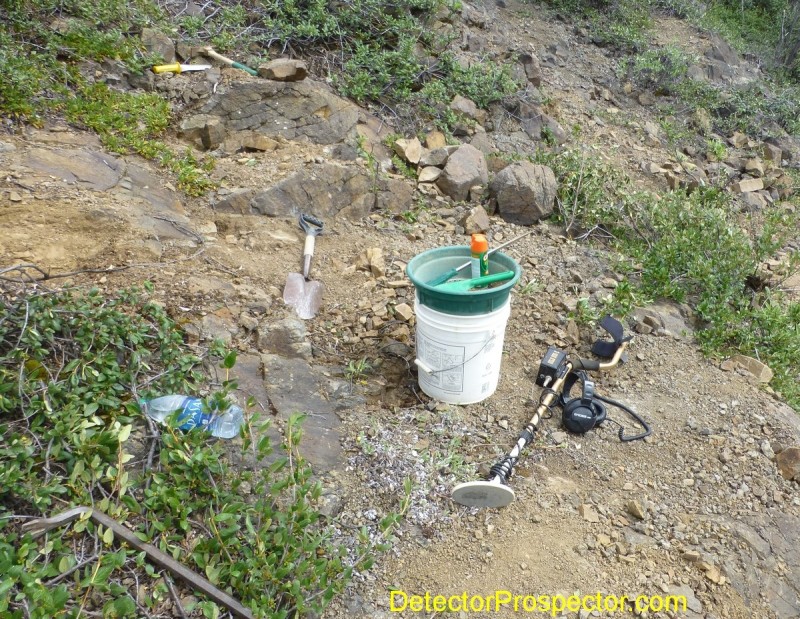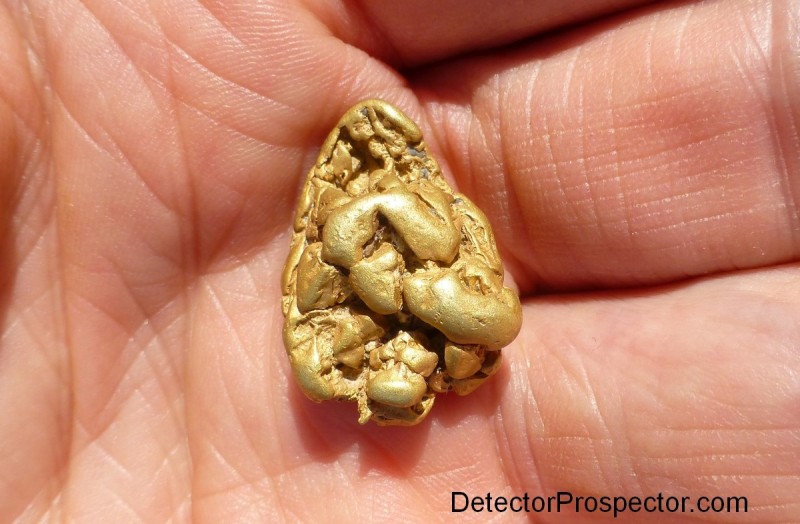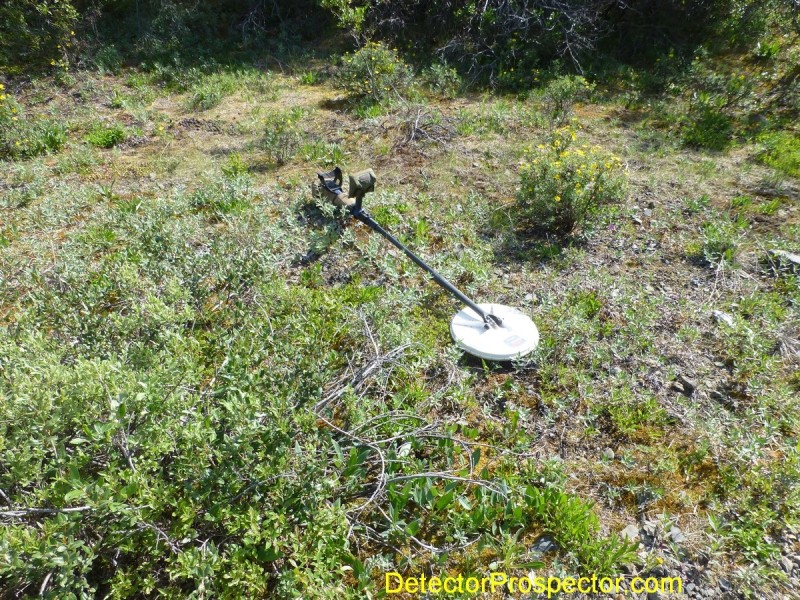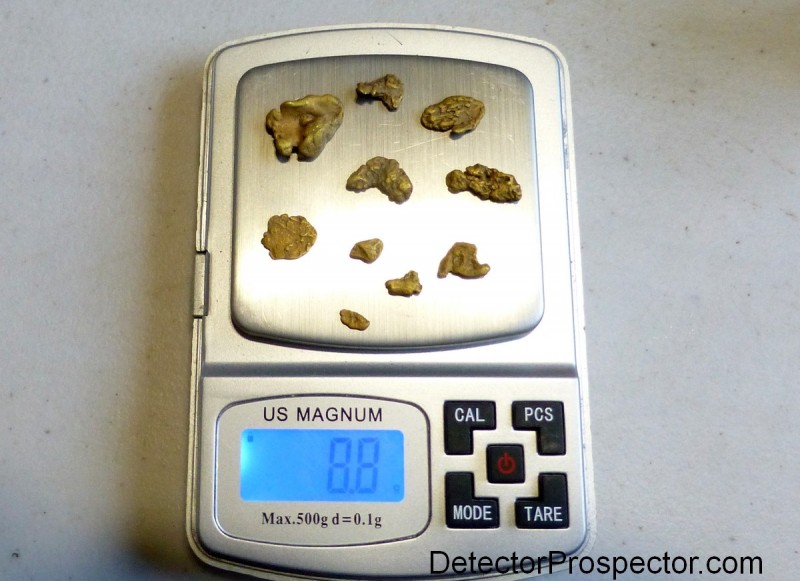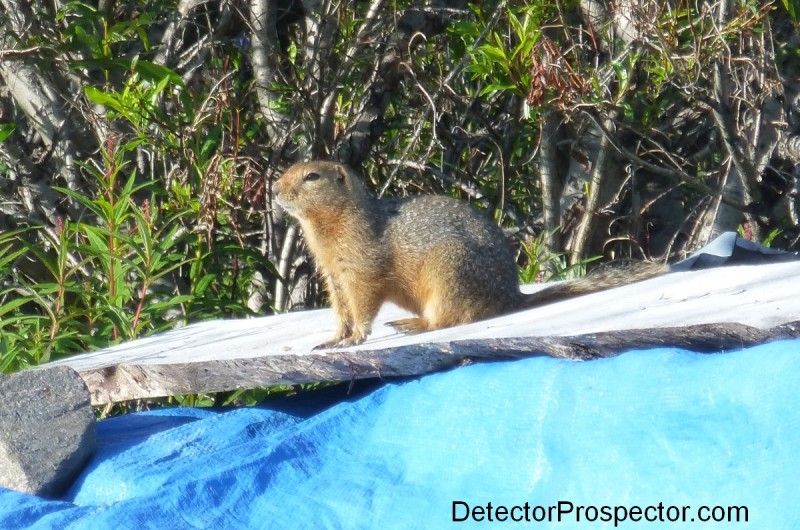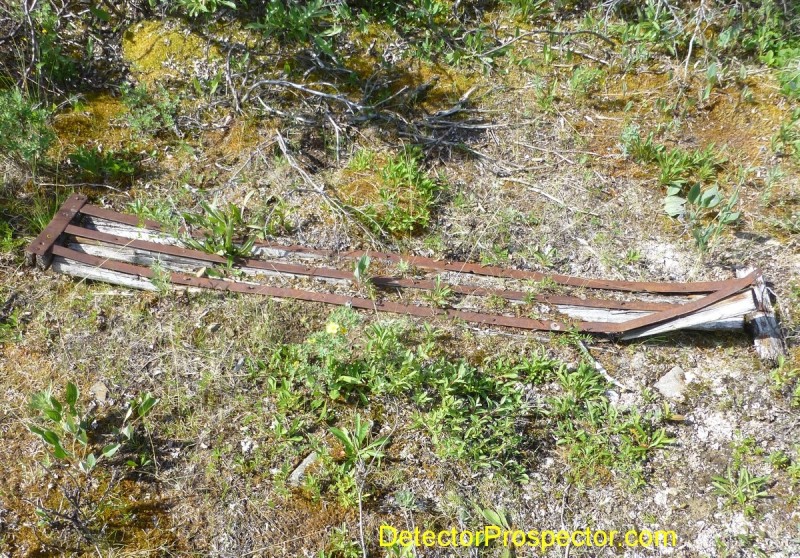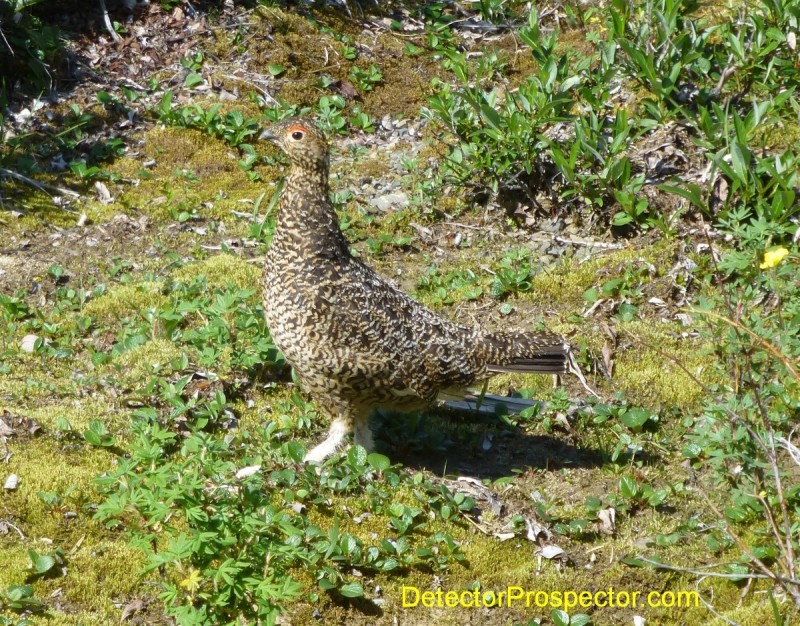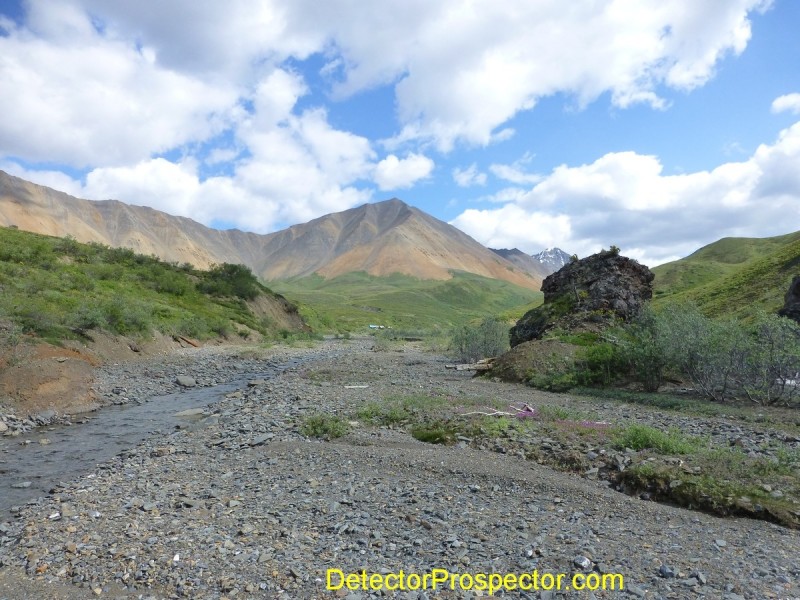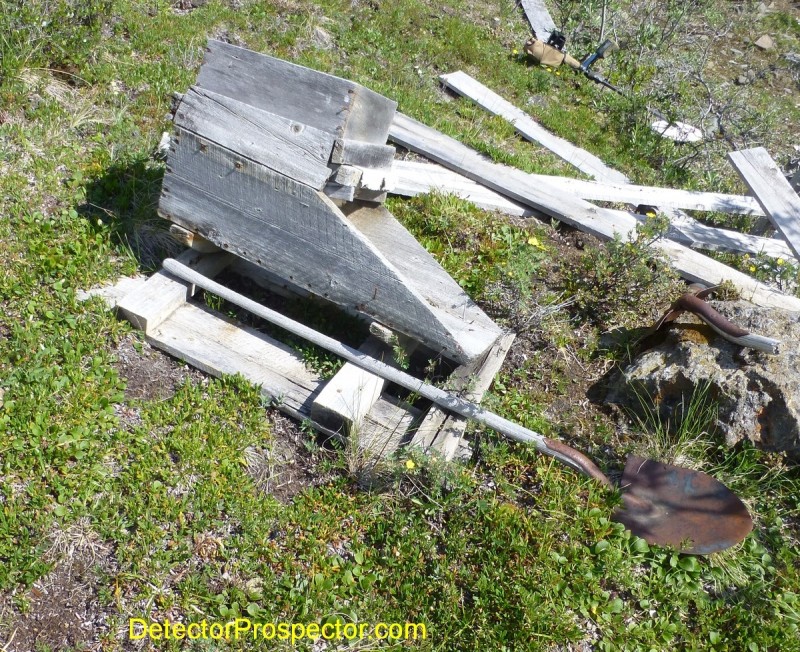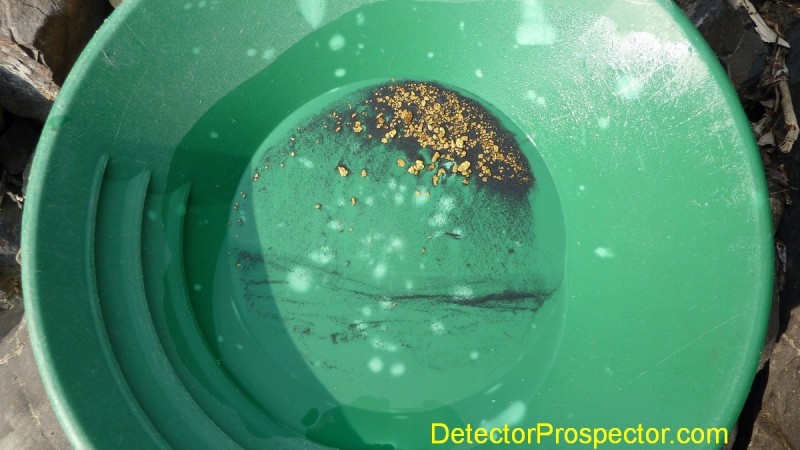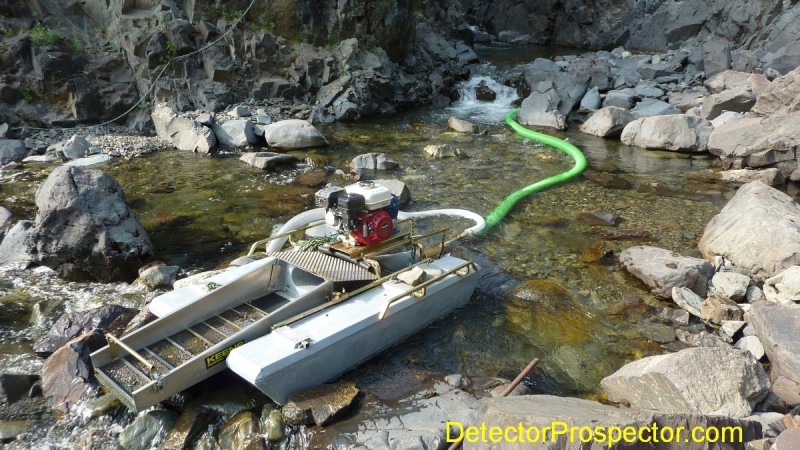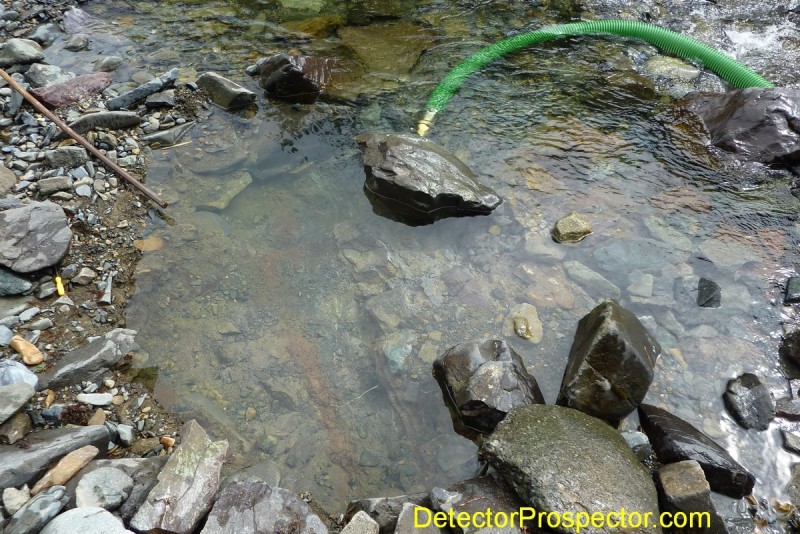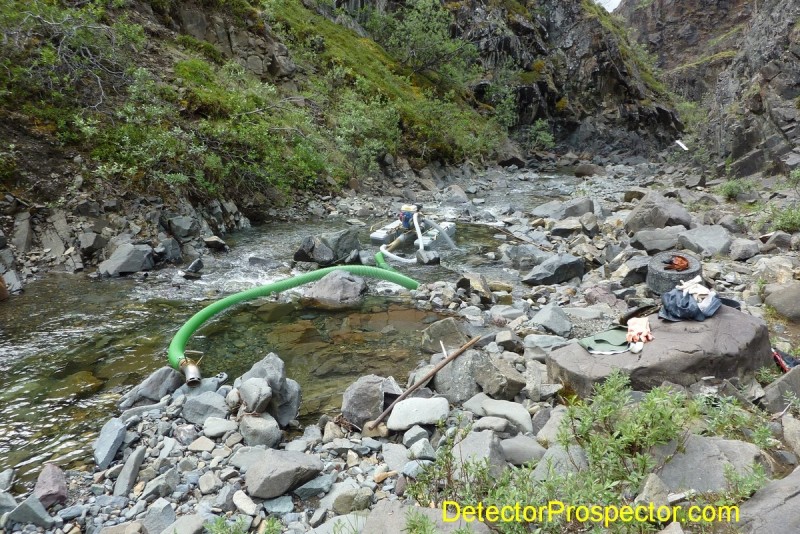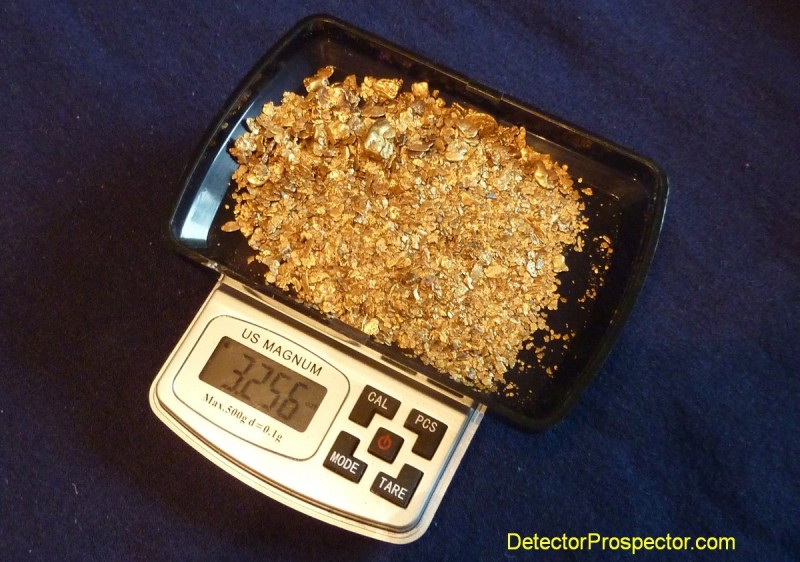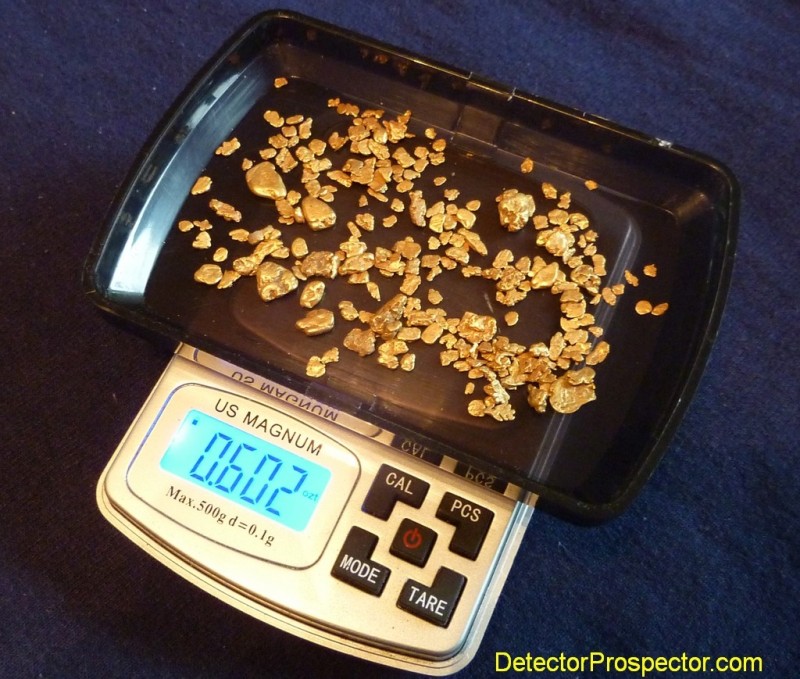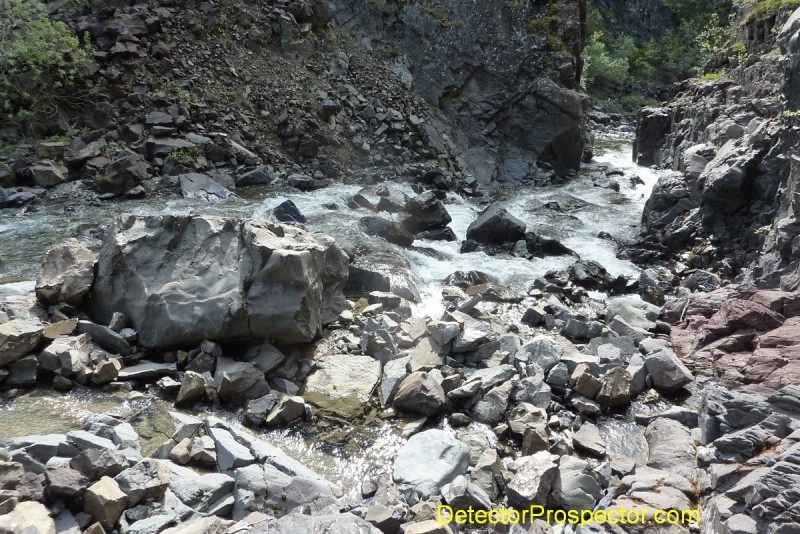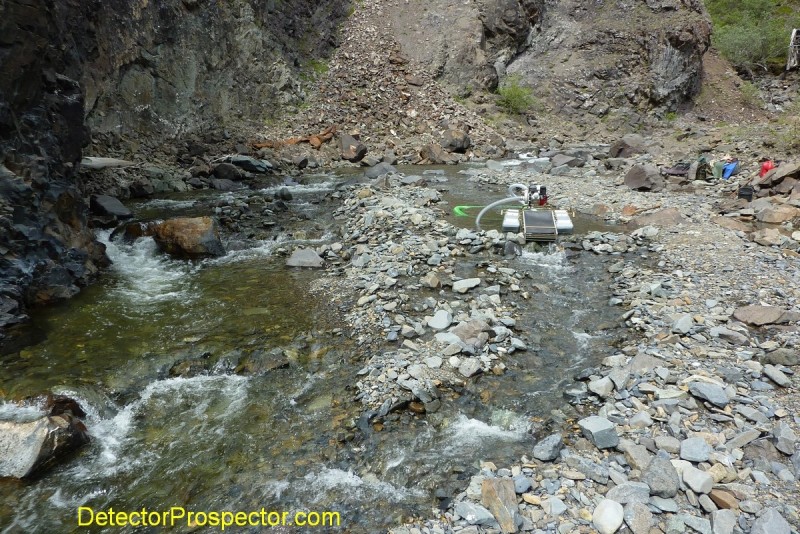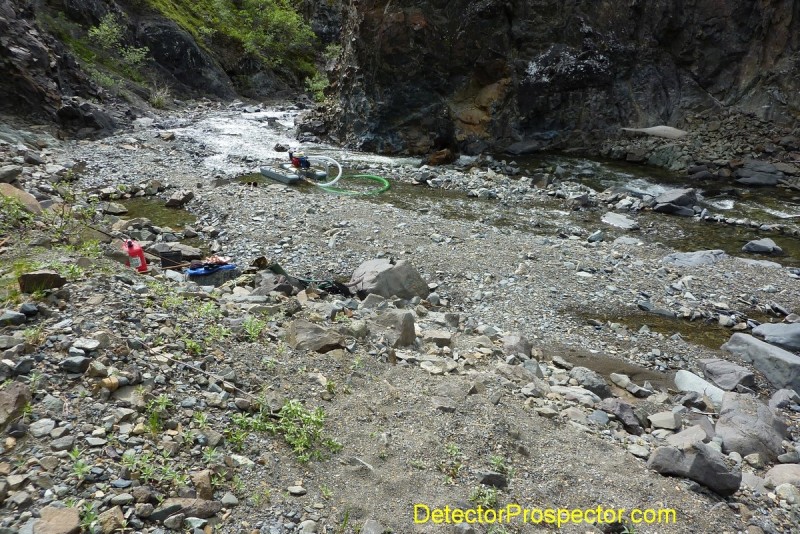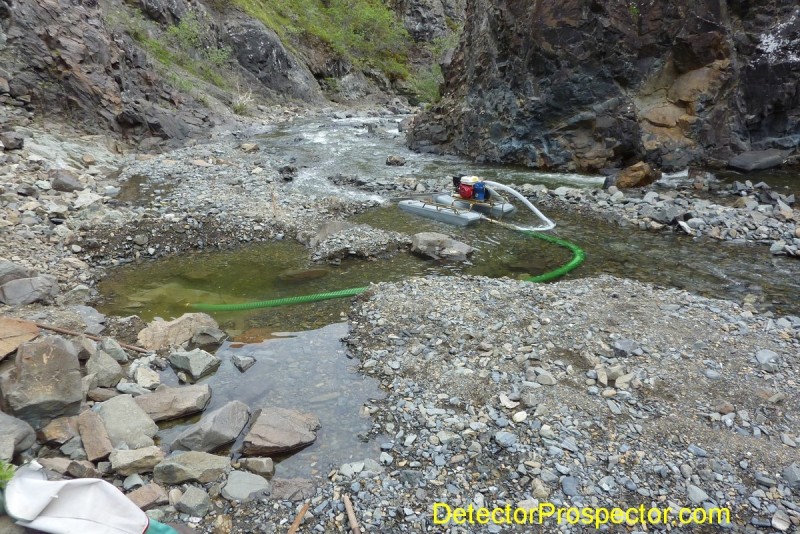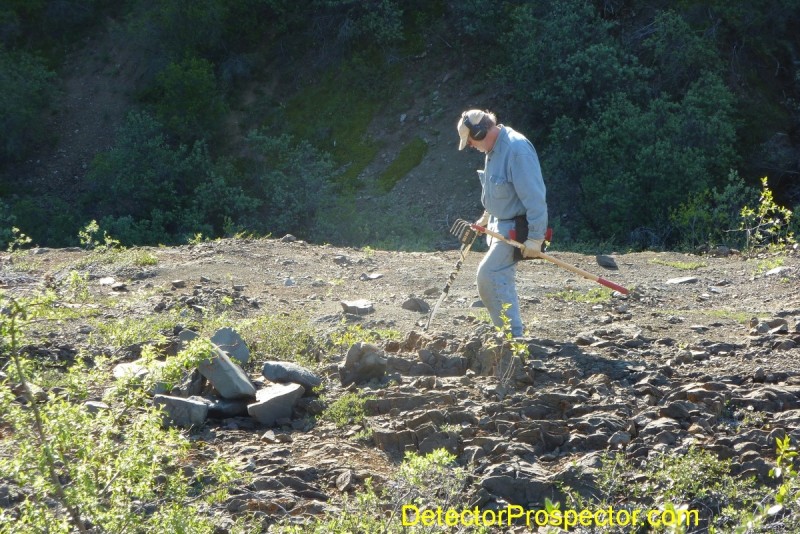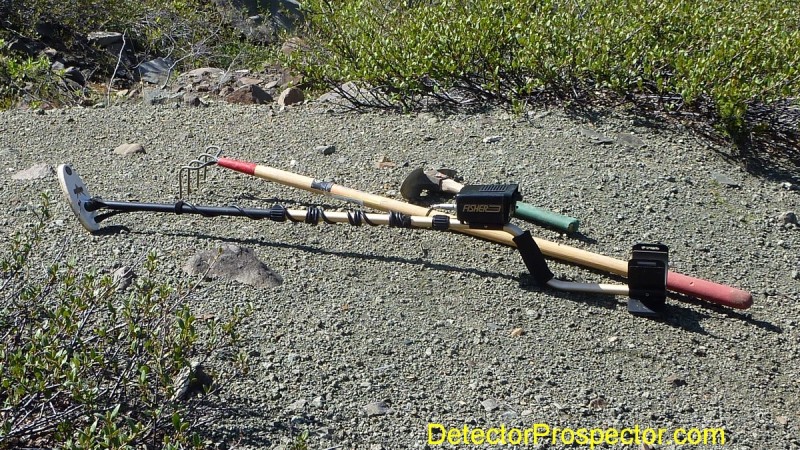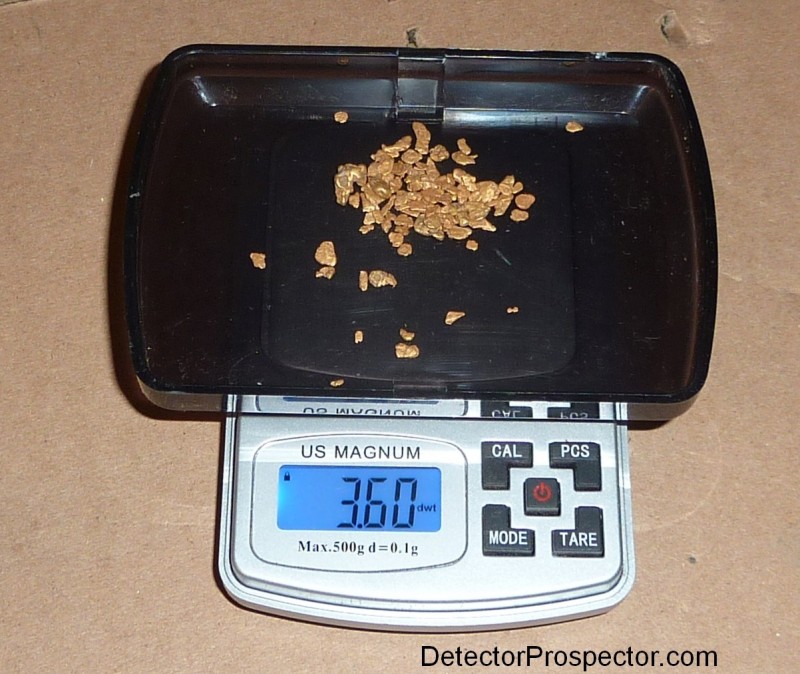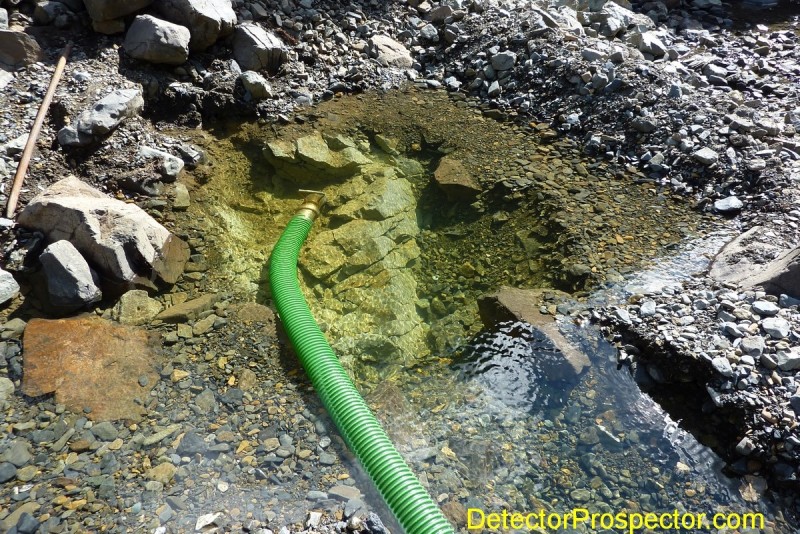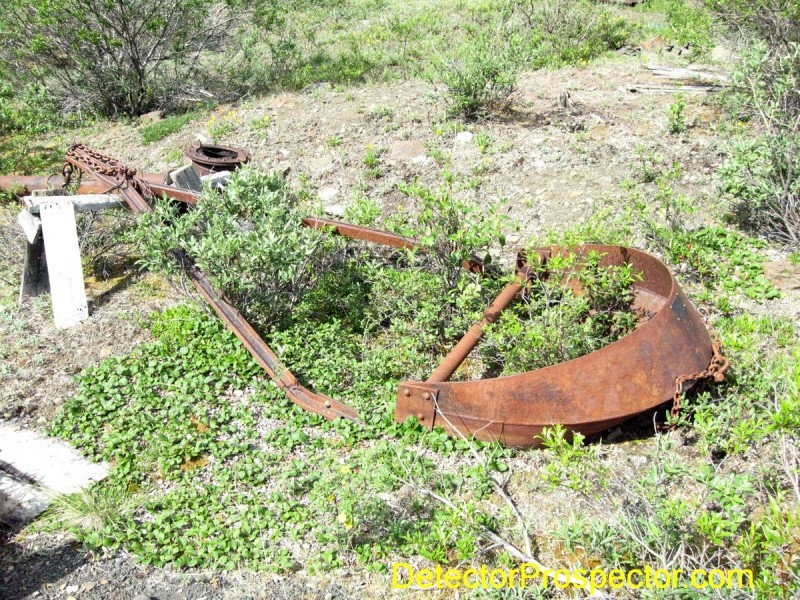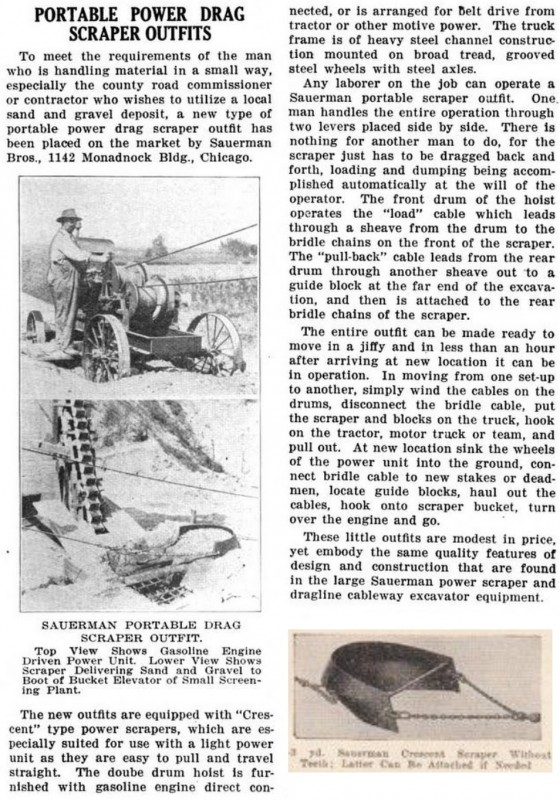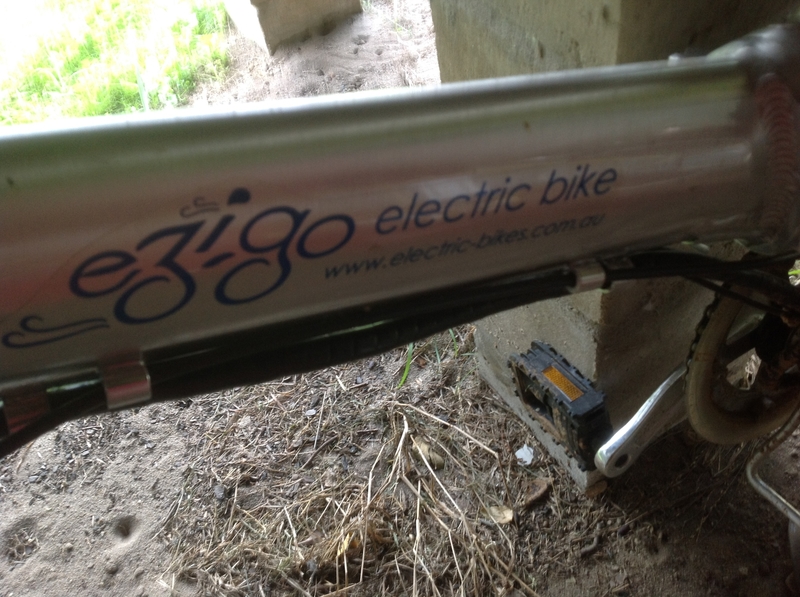Leaderboard
Popular Content
Showing content with the highest reputation on 12/05/2018 in all areas
-
13 points
-
6 points
-
Well well well, My Taskmaster in WA has sent me a little notice that explains why he knew every day that I wasn't working on the patch.... He has his own spy net!!!!! This picture shows my camper, quad ,and truck... the backhoe and dryblower should be in there too.... maybe even ME Wow, we tore up heck over there didnt we... see how small that was in relation tho--- Lots of gold left for this coming year!!!!!! Yeeeeeeehaaaaaaaawwww..5 points
-
One bottle cap two boot tacks and a target I could never find. Sorry it’s as near as nothing you can get! Chuck3 points
-
I've been a member of the Ringfinders for about 7 years. Get a call for lost "Bling" about once every month or so. I've never charged anyone a cent whether or not I find the lost item. I just tell them to "Pay it forward" if they get a chance. It's been a lot of fun, especially if you find the lost item which is about 50% of the time. Over the years I've had 4 calls from women who threw their rings out the window of moving cars after arguments with their Spouses. Was lucky to find one of them. Makes me wonder how many other rings are out there besides our roads thru out the U.S. Being a member of Ringfinders has also opened the doors to other metal detecting opportunities as some people will give you permission to further hunt their properties.3 points
-
The rest of the trip was nice though clouds kept threatening to move in. They would clear out however and the sun would appear again. With time running out I got back to detecting with the GPZ 7000 plus a little bit here and there with the Equinox. All in all I was only averaging about eight nuggets a lazy day of detecting, getting about 1/4 ounce a day average. Hand stacked rocks and bedrock - nugget detecting heaven! I have mentioned I have never found a nugget weighing even a half ounce at Gold Hill, though they are mentioned in the old records, and I know of some found more recently by others. I really thought I had one this trip however. I was in a bedrock gut leading into a mined pit that was producing nuggets. I got a deep signal in a bedrock pocket right in the bottom of the little gully. Whatever it was was wedged down in deep and tight, and when I first laid hands on it I thought "Aha!" but it was not to be. I found the largest copper nugget I ever found though there is very little copper exposed on the surface. I will treat it with acid later and post a photo someday, but for now here is what it looked like fresh out of the ground. Large copper nugget - should have been gold! The last couple days of this great trip were dedicated to some serious camp cleanup and so this adventure finally came to a close. My detecting had exceeded expectations. I am certain I could have found more gold had I worked more single-mindedly at the task, but the fact is this trip was a near perfect balance of relaxation and finding gold. I finished up with just a hair over 3 ounces of nice chunky gold. Three ounces chunky gold found by Steve with GPZ 7000 The Equinox 800 had proven itself to be an excellent tiny gold sniper on this trip. It was the GPZ 7000 that made the day however, literally making it feel like cheating compared to what the other guys were able to do. Dudley and George both got gold but it was the GPZ that impressed us all. I have long known how powerful the machine is, but this is the first time I have run it on ground I know very well. It was amazing at how easy it was for me to do well just one more time at Chisana and Bonanza Creek. Dudley had been hoping to find a couple nice pendant nugget for his daughters but the dredge kept finding smaller gold. I gave Dudley what I considered to be the best pendant nugget I found at 5 grams and traded a second 3.5 gram nugget for some fine gold he got dredging. Pendant nuggets 5 grams and 3.5 grams Again, just a fabulous trip. Thank you George and Dudley for the invite and a great time. I have learned never to say never, so I don't know if I will ever return to Chisana and Gold Hill again or not. I am grateful I got this last trip in however as it ended my decades of visits to the hill on a somewhat brighter note than the last time. I hope you all enjoyed this trip down memory lane and a rare look at places and times in Alaska that few will ever see or experience. I am very lucky to have been born where and when I was. I have seen Alaska transition from true frontier to modern civilization in my lifetime and this is just a small part of what I have experienced. There are many people in this tale who have not been mentioned at all out of respect for privacy issues. My thanks to all of them. Thanks again for riding along on this long thread! One last look at Gold Hill below.... Steve Herschbach 2018 Herschbach Enterprises Gold Hill at Chisana, Alaska3 points
-
I'm starting to worry my season may be over. This snow just wont quite leave the ground. Last Sunday was going to be warm enough for a water hunt, then the thunder lightening started happening. oof. I normally would have hung the waders up by now, but water detecting has been the only prospect for some coil time. We could use El Niño this year for sure. Now what? Wait? Maybe get a calendar and start crossing the days off with a big red marker? Write poems about the melancholy despot clinging to my treasure with its cool minty grip?2 points
-
Actually this is not about an economy model cost savings measure on ML's part but is sort of the way the detector design community is headed as they move heavier into digital signal processing. It is not even clear to me that the CTX 3030 flagship detector has true all metal mode (as opposed to simply a zero discrimination pattern). I do not own a CTX, just went through the manual in detail, so I am sure a CTX expert will set me straight. But I can tell you with certainty, the Deus @ $1500 does not have a true all metal mode (Gold Field mode being the closest approximation). Point is, this is not about saving cost. It is about the the detector designers favoring digital signal processing over transmitting the raw unfiltered signal. All metal mode is not something you will automatically find on many high end detectors. So the OP's statements like, "When I pay $650.00 for a machine I expect it to have that option on it -period. Their is no excuse why it does not" that imply the lack of a true all metal mode is an Equinox oversight or that all high end detectors have this feature, is not consistent with many high end detector designs of recent years (though true metal is still a feature on a number of recently released detectors). Though I do understand why you like it, Maltfoto, my point was there are ways you can use the Equinox zero disc mode to your advantage without losing a lot of capability vs. true all metal and, as I discuss below, the 800 would have been more suited to your feature preferences and detecting style. The move in the detector community away from including All Metal Mode or at least the marketeer's imprecise use of technical terms that have kind of blurred the line between Zero Disc mode and (true) All Metal Mode is addressed in Steve's excellent Detector Mixed Modes Guide. This will better illustrate whey you will not find all metal mode on all detectors, even high end detectors, and also how it can be mitigated through mixed modes or intelligent application of available features on detectors which do not incorporate the feature. Regarding Equinox. Gold Mode available only on the 800 is probably the closest thing to a mixed mode. It invokes most features of true all metal mode through its use of VCO pitch like audio and true audio threshold for target acquisition and target ID at depth using the discrimination circuit. Though still not precisely true all metal, this weak signal mode is also the mode that is the ideal mode to test small gold target performance versus the Fishers. Again, it seems for the type of detecting Maltfoto prefers, the 800 would have been the better choice. Regardless, I think the 600 is a great complimentary detector that, despite its shortcomings, does still have advantages over the Fishers in some, if not most, scenarios. So hanging on to it and learning more about how to get more out of it with experience would be a great move by Maltfoto, if getting an 800 is out of the question. Thanks again to Maltfoto for kicking off a great discussion.2 points
-
WTG Fred. That one cleaned up pretty good. It was a good time sharing a few stories from the past and hearing Jim McCulloch's stories for the first time. What a treat that was. I was out there watching. I didn't see much 'wobble!' The second morning I was there you were way off half a mile up this hill so you're getting your legs back. You were just maintaining that nice pace. The nuggets can feel Fred chasing them again. Mitchel2 points
-
4" x 18" DD coil for my V3 would be very nice. Doesn't have to be figure 8. Just a normal DD would be fine. Doesn't even have to work at all three frequencies. Even if it only worked on 7.5 would be ok with me. HH Mike2 points
-
2 points
-
2 points
-
The decision makers at Whites really finally need to jump into the 21st century and give us a machine that can be updated, waterproof as a matter of course, wireless headphones as a matter of course, create wireless coils with a wired option (like others do with headphones, because wired is still the only solution in and under water, but with wireless coils you can upgrade hardware via coil change with coils that are tuned to their specific applications), create an app so that people can choose to use either a remote or phone to control their coil. Create a V4 or V5 that addresses the V3i shortcomings. It's still my favorite machine, but it needs improving to stay competitive. Keep the spectrograph, Polar Plot, etc., but also add an imaging program like Target Trace. Integrating with cell phone applications would be awesome. Open a metal detecting app market for developers. This worked wonders for cell phones. Look at all that's available now as people were given a platform to display their coding talents. This could work for metal detectors with optional cell phone control. Create a pinpointer that communicates with the host machines and adapts their disc settings. Add a small LCD to pinpointer. Do these things, or others will, or already are working on it.2 points
-
In case somebody has missed it: Now that's impressive.. great work, thank you!2 points
-
Bedrock Tips:How many of you have had the chance to work virgin bedrock? By virgin, I mean that the bedrock has been exposed by modern mining. In other words, the bedrock has not seen the light of day since the gold was originally deposited on it or in it eons ago. Moreover, a chance like this is a rather rare opportunity because it requires prior connections with the miners in order to have access to this bedrock. After all, it's very expensive to remove the stubborn overburden to expose the mother rock. Furthermore, some miners are very sensitive about allowing anyone access to their virgin bedrock for any reason at all, if ever. It's a bit of a loaded request, even if you already have a personal relationship with the miners. So, if there's no prior relationship, the chances are slim to none for access, and even if you do have a relationship, the answer could still be no. You have to be ready for any eventuality.However, if and when you do get the opportunity to work such bedrock, there's a few things that will help your chances in finding any residual gold left behind from the mining activity.First and foremost, ask questions. Find out where the heaviest run of gold was in the pit. For example, find out it the deposit was heavier in a dip in the bedrock, on the start of a rise, on a shelf, at the bottom of a long drop, etc., and find out if there were certain colors in the dirt that indicated better pay: oranges, reds, grays, purples, blacks, etc. With the answers to a few questions like these, you can improve your odds of checking the most-likely places in a large excavation. For instance, you'll find areas that were barren by asking like questions (areas of loose wash, etc.), and you'll locate areas that were hot spots by doing the same.When it comes to detecting, you'll need to pay careful attention to the answers to your questions plus you'll need to pay close attention to what the detector is telling you about the temperature of the rock you're hunting. For example, if race into the pit and start swinging like a madman to cover as much ground as possible in the shortest time, you'll be doing a disservice to yourself. Why? Virgin bedrock demands respect, and it demands a slow approach while listening to the ground minerals and scrubbing the surface to obtain every cm of advantage while listening carefully to the tiniest alterations in the threshold. As well, by paying close attention to the mineralization, you will learn which coils will be most beneficial, including which size of coil to utilize. (A variety of sizes may be necessary to do a proper job, and in extreme ground, the wrong coil type will be an extreme waste of time.)As to the bedrock itself, you may wish to employ a tiny detector like the Falcon to find streaks and runs of fine gold that will elude your bigger detector's coils. It's surprising how much fine gold can be left on bedrock or caught in cracks. I had my eyes opened wide several summers ago to just how much gold gets left behind and just how much fun it is to use a tiny detector to chase pockets of fine gold!As for non-electronic sniping, it's very important to study the rock carefully. Often when working virgin bedrock, clay is a common occurrence. And, that clay is a great hider and or robber of gold. Moreover, look at what's riding within the clay. Are there little stones of various sorts? Is it just slick clay (no inclusions)?As well, be meticulous about examining the surface of the bedrock. Sometimes what looks like perfectly level bedrock with a solid surface may have cracks and crevices perfectly camouflaged by the minerals that are running within the clay, minerals that match perfectly in color the host bedrock. Use a variety of tools to scrape and scratch at the surface. I've been stunned while sniping non-electronically more than once by uncovering small cracks and crevices in this manner, ones that held a surprising amount of good gold.As well, if the bedrock is dry, get a good sledge hammer and hit the bedrock to see if any puffs of dust arise like little fountains of fine particles. This signals a crack or crevice. One of the wonders of bedrock is that a crack or crevice may be snapped shut tightly, but widen below its mouth significantly. I remember the first time I found one of these: it had a pocket of small nuggets in it, and the nuggets were far too big to have found their way into the crevice opening. There are lots of theories as to how this happens, but the important thing to remember is that it does happen. I've also found larger nuggets this way as well when sniping without electronic backup. What tools help with this process? For inexpensive alternatives, a blade screwdriver bent at a 90 degree angle; a wire brush; a stiff bristle brush; an awl; a pocket knife; a small metal gardening shovel; a variety of household spoons (teaspoon size to tablespoon--be sure to have sturdy ones that won't bend easily); a small sledge and a couple of cold chisels for widening cracks and crevices; if water is present, a suction gun of some kind; etc. With virgin bedrock, you will have the chance of a lifetime to find gold in a place that no one else has ever looked, so take the time to do a thorough job, and the reward can be great. On a connected note, I've come behind others that have worked such places in a hurry and found some beautiful nuggets (larger than anything they found) because they tore across the bedrock in a mad rush to cover the entire area. The sad truth is that if they'd have slowed down and paid that virgin bedrock the respect it deserved, they would have found the bigger gold instead of me. All the best,Lanny2 points
-
Great seeing the final chapter and all the photos from Gold Hill. I read of the early adventures many years ago at AMDS. I first visited that country in Sept of 71 hunting the hills across Jack Creek from the Nabesna road with my dad and uncle. The Nabesna river sand bars closest to the road used to be a landing strip from the building of the AK HWY era and littered with hundreds of 55 gal drums. Beautiful country.2 points
-
Modern induction balance (VLF) detectors usually can operate in two basic modes. A true detect everything all metal mode or a discrimination mode. Discrimination modes use various filtering methods to help separate desired targets from the trash. The filtering takes away from overall depth and the target identification gets less reliable with depth. In nearly all cases a detector operating in a pure all metal mode will find targets deeper than a unit running in a discrimination mode. It is possible to take a detector running in discrimination mode and set it to accept all targets. You are now running with zero discrimination, and the detector now sounds off on all targets. The problem is that some detector manufacturers are labeling this zero discrimination mode as an "all metal" mode since all metals are being detected. Unfortunately, you have not really turned off the discrimination. A true all metal mode employs no filtering at all, it directly reports a target. In zero discrimination the target is still being filtered, but you are telling the machine to report all filtered targets as good targets. The bad news is you still are losing depth and sensitivity compared to the true all metal modes. Most metal detectors are made for coin detecting, and so most only run in a discrimination mode. You can set them to accept all targets, to run zero discrimination, but these units simply do not have a true all metal mode. All metal detectors designed with serious prospecting in mind have a true all metal mode. The reason is simple. True all metal nearly always hits hard to find targets, either very deep items or very small, better than detectors running in a discrimination mode, even when set to zero discrimination. This is so important to me that I will rarely ever consider purchasing a detector that does not have a true all metal mode. Be careful when buying a new detector that if you want a true all metal mode you do not end up with a detector that really is offering only a zero discrimination mode. One clue is that a detector with a true all metal mode will also have a threshold control to set the audio in the all metal mode to a barely perceptible sound level. Zero discrimination modes are usually what is referred to as "silent search" modes without a threshold sound and therefore no threshold control. It is possible for a detector to run in all metal and discrimination modes at the same time. This is referred to as mixed mode Very cool! I am not sure who first came up with this feature but Nautilus has for a long time offered units that put the all metal signal in one ear of your headphones and the discrimination signal in the other ear. More common are detectors that put the all metal output through the speaker and the discrimination signal on the meter. The White's MXT has the Relic Mode, which is a mixed mode. I wonder how many people use Relic Mode but really do not understand it. Good targets give a high pitched chirp. Junk targets honk depending on where the discrimination knob is set. But there is a third, more subtle audio that indicates a target is there but the detector cannot identify it because it is too deep. This is the all metal signal. The meter will be blank but there will be an audio signal. When nugget detecting, you want to hear these, and dig down until the target id kicks in. I think many people focus so much on the other two audio responses that they ignore the fainter deep all metal signal. It is easy to fall into a habit of just digging only those high pitch targets. Not good. White's V3i Mixed Mode program option The various Fisher F75 and new Gold Bug models have a basic single tone in all metal, but the meter is still active in discrimination mode. So you get the signal, then check the meter. If within range, you will see a target id. If deep, the meter will be blank. It is very similar to the old Compass Gold Scanner Pro, which had a target id meter that functioned while in all metal. The White's V3i has a very powerful programmable stereo mixed mode setting. The DFX also offers mixed mode. The new Garrett AT Gold has a true audio all metal mode while the meter is still working in the discriminate mode. The same thing can be achieved with many detectors by running in all metal mode and then, after a target is acquired, switching over to discriminate mode to check the target. The obvious downside is that this requires lots of switching back and forth, and a mixed mode detector eliminates the switching. The key to mixed mode is simple. Those targets in a good location that are so deep you get no indication on the disc channel are the ones you really want to think about. If the area has produced good finds but is now near to being worked out, these deep signals are the ones anyone running in a normal discrimination mode is going to totally miss. Sure, it could be trash. But really deep targets are often the best, and so digging some of these on occasion can produce some really good finds. I have found from my personal experience that detectors often run smoother and targets are easier to hear in all metal mode. I tend to prefer a detector that has an audio all metal mode coupled with a metered discrimination mode. I just listen for the target, and once I hear it I stop and analyze it with the meter. When in doubt, dig it. Some people prefer to dig only targets that read as probable good targets as they do not like digging junk. I tend to dig anything unless it is almost sure to be junk. In other words, I dig the iffy targets. That means I dig more trash but it also means I make finds others miss. It does depend on how patient I am feeling though, and some days I will just dig those really good targets. Those are getting harder to find these days. The only place mixed mode does not work well is in very trashy locations, especially the units that generate multiple tones. It just gets real noisy. But for many experienced detectorists mixed mode is a sort of secret weapon. Now you know why! ~ Steve Herschbach Copyright © 2010 Herschbach Enterprises2 points
-
From the Fisher metal detector website: GOLD & TREASURE METAL DETECTORS FISHER "F" SERIES MULTI-PURPOSE VISUAL & AUDIO TARGET ID DETECTORS Fisher F44 - The Ultimate Weatherproof Multi-Purpose Metal Detector. Fisher F44 metal detector MSRP $399.00 Internet Price $309.00 Details here Fisher F44 control panel Fisher F22 - Weatherproof All-Purpose Metal Detector. Fisher F22 metal detector MSRP $289.00 Internet Price $209.00 Details here Fisher F22 control panel Fisher F11 - Great All-Purpose Metal Detector. Fisher F11 metal detector MSRP $199.00 Internet Price $159.00 Details here Fisher F11 control panel Fisher F75+ - The F75+ is an American Made, high-performance multi-purpose professional metal detector. The F75+ was built off the proven F75 platform, all the legendary features you've come to know and trust from the F75, plus an added Boost Mode for even more depth! Fisher F75+ metal detector MSRP $799.00 Internet Price $649.00 Details here Fisher F75+ control panel Fisher F75 Ltd - The F75 in black, with Boost and Cache Locating Processes. The metal detecting industry's premier relic hunting and ultimate multi-purpose metal detector. Fisher F75 Limited Edition (Ltd) MSRP $1449.00 Internet Price $699.00 Details here Fisher F75 Ltd control panel Fisher F75 - The Ultimate Detector! The metal detecting industry's premier relic hunting and general purpose metal detector. Fisher F75 metal detector MSRP $1249.00 Internet Price $549.00 Details here Fisher F75 control panel Fisher F70 - Has Many Great Features. Use it for Coin Shooting, Relic Hunting, Gold Prospecting & More. Fisher F70 metal detector MSRP $799.00 Internet Price $449.00 Details here Fisher F70 control panel Fisher F19 - New from Fisher®, the best relic machine ever! Fisher F19 metal detector MSRP $899.00 Internet Price $449.00 Details here Fisher F19 control panel Fisher F5 - Combining the Best in Analog and Digital Technology. Fisher F5 metal detector MSRP $549.00 Internet Price $349.00 Details here Fisher F5 control panel Fisher F4 - Versatile Multi-Purpose Detector with DD Coil. Fisher F4 metal detector MSRP $449.00 Internet Price $299.00 Details here Fisher F4 control panel FISHER GOLD NUGGET / PROSPECTING METAL DETECTORS Fisher Gold Bug - More than just a HOT Gold Machine! Fisher Gold Bug metal detector MSRP $549.95 Internet Price $449.00 Details here Fisher Gold Bug control panel Fisher Gold Bug Pro - The best, most versatile prospecting machine on the market! Incredible sensitivity to the tiniest gold nuggets. Fisher Gold Bug Pro metal detector MSRP $699.00 Internet Price $549.00 Details here Fisher Gold Bug Pro control panel Fisher Gold Bug DP - Superior gold prospecting and relic hunting performance! Fisher Gold Bug DP metal detector MSRP $749.00 Internet Price $599.00 Details here Fisher Gold Bug DP control panel Fisher Gold Bug 2 - The MOST Sensitive Gold Hunting Detector Ever Made. Fisher Gold Bug 2 metal detector MSRP $899.00 Internet Price $764.00 Details here Fisher Gold Bug 2 control panel FISHER UNDERWATER, BEACH & SURF HUNTING METAL DETECTORS Fisher CZ-21 Quicksilver - Premium Multi-Frequency Underwater Detector Whether it be Dry Land, Saltwater or Fresh Water, the CZ-21 Delivers. Fisher CZ-21 metal detector MSRP $1799.00 Internet Price $1099.00 Details here Fisher CZ-21 control panel Fisher 1280X - Proven Performance on Land or in Water. Fisher 1280X metal detector MSRP $829.00 Internet Price $549.00 Details here Fisher 1280X control panel FISHER RELIC HUNTING / MULTIPURPOSE / DEEP SEEKING METAL DETECTORS Fisher CZ-3D - Coin, Relic & Saltwater Beach Hunting Specialist Fisher CZ-3D metal detector MSRP $949.00 Internet Price $799.00 Details here Fisher CZ-3D control panel Fisher Gemini 3 - The Deepest Treasure Finder - DEEPEST All-Metal Detection! Fisher Gemini 3 metal detector MSRP $849.00 Internet Price $649.00 Details here From latest Fisher catalog (2016) click for larger version: Fisher metal detector models and specifications 20161 point
-
Hey Mike, best bet is to call the factory and ask to talk to a repair tech - 541-367-6121. For reference here is a YouTube video that goes through the menu system -1 point
-
1 point
-
1 point
-
Serious Detecting sells their brand of a nice large padded carrying bag for a reasonable price.1 point
-
Cipher, I agree 100% with your comment on using the Detech 13 Ultimate on the V3i. Using that coil and running the Deep Silver program and sweeping slow, can sniiff out deep silver extremely well. Just gotta listen for that high tone peep !1 point
-
I wouldn't be so quick to dismiss First Texas with Carl and Dave Johnson et. al. On board. Carl did help bring the V3i, a 3 frequency machine, to market, and while I do not find it to be as stable across multiple environments as my Equinox, it is still my go to for most inland hunting. There are tasks the V3i is better at too. It is the best discriminator I've ever used in mild to moderate soil because of its tools and it's 3 frequencies. I find it's VDI to be unusually accurate. Of course I've dedicated a lot of time to that machine, but it's been worth it. And that 13" ultimate Detech brings the V3i to life in a way that no stock coils do, remarkably so. Dave did bring the CZs to market, which have stood the test of time. The F75 is a single frequency machine that operates like a multi in many ways. Still one of the very best machines out there. Additionally, It is not common knowledge that Whites would be a lot further in the game if they hadn't stifled their engineers to a point where they felt the need to exit and/or go elsewhere. I have no doubt that the day is coming when First Texas is sitting in the catbird seat because of people like Carl. The things they were working on over there at Whites when everyone left, the world may never see from Whites now. The company gave away more than many companies accomplish. I agree with Carl in some respects and I agree with Steve in some. Though it is the performance that makes the machine, and I'm a happy Equinox owner, I don't care for the marketing tactics. They are disingenuous, as are many others,' and many units are sold based on marketing alone. I have spent a lot of time on social media and various forums to see people say they picked a particular machine solely on the basis of the number of frequencies it claims to run. In fact, this even affects Minelab purchase decisions as many people who own FBS products will not buy an Equinox saying things like "there's no way a 5 frequency machine can do better than a 28 frequency machine." If they understood the technical truth of the matter sooner they'd find that neither of them are either of that, and that the Equinox does actually have strengths that the even the CTX lacks. So my position would be that, yes most, if not all marketing departments use hyperbole, mislead, etc., it is important for there to be a rebuttal of those tactics by competitors when it comes to specific claims or implied claims that are being used for purchase decisions. A little bit of knowledge is dangerous and that's what the vast majority of us have. Enough to be mislead, until we arrive at a point Steve has, where you say there's more to this than meets the eye without a full time career in it. I'll just stick to informed purchase decisions and what works. Learning not only are some machines not running as many as we've been misled to believe, but that it's also not a frequency numbers game to begin with is part of an informed purchase decision. Don't look at the numbers, but how people are saying it works. I do however think that going forward it's important for consumers understand that. If something better than the Equinox comes along running less than 5 frequencies or less than 28 in the case of marketing of FBS, many people will be cheating themselves going by specs that aren't easily understood until the real world checks in. Often unless there's a revolutionary difference it never does for some people until they read a thread like this and begin to question what they thought they knew. I've done a lot of research not only on metal detector technology, but the history behind companies and engineers. I've always found Carl himself to want to be accurate, honest and helpful. I don't think he's motivated solely by self promotion or promotion of FTP.1 point
-
1 point
-
Simply amazing . . . What an incredible series of adventures you've had Steve, and I love the pictures you've added which only contribute to the richness of your stories. There are a lot of little tips sprinkled throughout, ones that are worth noting for later recall. I loved what you wrote, and you have a nice, relaxed writing style that is very comfortable to read. My hat is off to you for the excellent job you've done while reliving your memories. Thanks again, and all the best, Lanny P.S. I'll have to come back later to add likes as I'm out of "likes" again for the day. (That just lets me know how much good suff there is on this site to like!)1 point
-
Since the V3i is still the most advanced detector made but is a bit cumbersome , put all the V3i features into an MXS package. Perfect. ?1 point
-
It's frustrating at times. I remember hitting and old neighborhood ball field and the first foil target dug was a gold band. 20 some pcs of foil later I hung it up and left. LOL1 point
-
Gold retrieved from friable bedrock by detecting. (When I'm in a patch, I power-detect: find a signal, scoop it, throw it in a plastic pan, keep detecting and collecting targets to maximize efficiency of time. I pan the "concentrates" when I need a rest or have finished working an area [darkness often interferes as bears are a real issue where I detect, as are cougars, so not a big fan of night detecting], and it sure is fun to see what all the targets were at the end of the day. All gold placed on the bottom of a full-sized gold pan. This is chunky gold.) All the best, Lanny1 point
-
In the above picture, the bedrock is a black slate, with some of it being very hot to detect, but the beauty of working this bedrock that was hand-mined in the 1800's is that the bedrock is friable (no, not in a pan on high heat) meaning the bedrock is arranged in perpendicular sheets. You will see a reddish-orange colour centre-left of the photograph, and that piece of protruding bedrock is rounded from stream weathering many, many eons ago before it was buried to be preserved as an ancient channel. Slightly above it and to the left, you should be able to pick out plates (sheets, etc.) of bedrock leaning to the left. If you have any experience with this type of bedrock, there are spaces between each individual plate or sheet, and this is where the gold was trapped. The interesting thing is that sometimes the gold is down deep, and other times there's a heavy concentration on the surface and within the first three of four inches of the bedrock (depending on whether the plates continued deeper or were only arranged in a pattern over more solid underlying bedrock) with nothing farther down.However, once I started to use Minelab PI's, I had an advantage over other VLF users that had detected and hammered the bedrock before me as my PI's could see much deeper into any deeper or larger gaps, and I was able to retrieve many sassy nuggets that hadn't seen the light of day since the dinosaurs stomped across the ancient stream placers. Nevertheless, if you've never chased nuggets in such rock, it's a challenge as every time a sheet is pried open to get to the gold, it drops, then when you try to get to it again, it drops again . . . . Quite the exercise in patience by the time the nugget is finally corralled.All the best,Lanny1 point
-
Hi, thank you for including your settings for the F70 vs the Nox 600 in your gold test. As has been said by me and others your test was probably not a fair comparison since you have repeatedly said that the 600 does not have an all metal mode. I'm the guy that mentioned the F19. I didn't refer to it because I misread your previous posts. I mentioned it because I don't own an F70/75 and the F19's all metal mode and transmit frequency are very similar to the all metal mode on the F70/F75s and I expect it to out perform the Nox 600 on just about any gold targets in all metal mode and it does. It does not out perform my Nox 800 however as it shouldn't due to the characteristics of the 800. You mentioned two tests with the F44 vs the Nox 600 near the beginning of your last post. You gave good details about the nature of the coin/nail test and the settings for the Nox 600 but you did not reveal what the F44 was set on for these tests. There is another post on this forum which concerns the 600 and 800 falsing in the zinc penny range 17-22, when detecting nails which can mask a penny or anything in that conductive range. It could be addressed in the next software update. I know you were using a copper penny but its target ID is pretty close to that falsing area. I can assure you that some people on this forum would like to try this test for themselves since it is really cold and frozen where a lot of us live and we need something to do with our metal detectors besides hack at ice. I can only test the 600 since I chose not to buy an F44 after trying one for awhile, for various reasons which are mentioned in another post about the Fisher 2018 product lineup. The structural negatives that you mentioned about the Nox 600 (they are the same on the 800) have been talked about here too. We are definitely fans but those flaws are obvious. Both of mine have shaft wobble issues. I have heard that a refit will be coming soon to all customers that have this problem. I complained about the arm cuff a little until it got cold here. Now it makes a lot more sense. I can wear as many layers as I want and my arm will still fit in the arm cuff!!! I am a big fan of the rechargeable batteries and I make sure I have a portable quick charger nearby on long hunts. I am at a bit of a loss as to why you bought an Equinox 600 in the first place. I bought my 600 (knowing that it did not have an all metal mode) because obtaining an 800 was next to impossible at the time. I wanted to learn as much as I could about the Equinox line before the 800s became available to us regular folks. Being a part-time gold prospector and a big fan of the X-Terra 705's all metal/prospecting mode (not a big fan of the rest of the detector!) I was eager to have something similar with a lot more transmit power which the 800 definitely has. Maybe you will get a chance to try one someday. Jeff1 point
-
Night hunter, also look at the geology of the club claims. Figure out why they picked those claims. Walk around them. Then find areas with similar types of geology and walk some around those. Study the trash. Are there square nails, maybe boot tacks, wire ..? That is great. Stay in the area. Or are you hunting on the side of the hill where people are shooting at? I stay away from those areas unless I know there is good gold there. Also buy a .25g nugget if needed and bury it in a vial at one of those claims and gain confidence in your settings. And lastly, start out in washes with less than 2' of overburden, if you can. Otherwise you will be digging some deep trash and that really wears on your mind quickly. Research, research, research .... hike, hike, hike... and lastly ... BE THE GOLD :p1 point
-
Thanks guys! I enjoyed learning new things from you guys as well as reinforcing things I learned on my own. I hope we can meet up and hunt together again in the future. I'm itching to get the Zed out more and the snow is here for me now. Winters for me are research research research (with hopefully a week to AZ ) BTW pulled a grammer out of the gulch with the SDC before the snow hit. My hands are still cold digging in that water1 point
-
Saw the story and a couple pix in ICMJ but this vid makes 'em all really pop..! Swamp1 point
-
Nice summer's play-day for you, Peg.. ? Guess you'll be rolling in soon down this-a-way.. Fortunately you missed the red tide issue we had 2nd half of Oct.. Caught a ride over on the gulf stream from the still-going-strong mess in SW FL.. Lucky for here there was rapid dissipation following a moderate fish kill; ocean locally back to normal bacteria count since early-mid Nov -- meaning it's safe once again to breath the air and get wet beachside.. Can't remember if you have the addy for area surf cams, so here it is: https://www.surfguru.com/ I live far enough from the shore these days I check 'em before heading over; you may not need to do so.. Swamp1 point
-
1 point
-
1 point
-
Weight wise it becomes a bit of a moot point to a degree considering the addition of electronics in some of the latest detector coils - Equinox 11" coil - 524 grams, Deus 11" coil - 465 grams including skid plate. Advances in coil construction with carbon fibre content also help lower overall weight to the point where the addition of miniaturised electronics and lithium batteries have negligible effect on balance. Another couple of advantages include the ability to run more than one set of wireless headphones to the same coil should you want to learn on the run from a more experienced detectorist, or just have fun listening in. Secondly and more importantly is if you own two wireless coils, you can essentially create two separate detectors, one utilising the headphones for full control, and the other operated via the main remote. I guess having wireless coils is one of those things that you have to experience over time to really appreciate the technology/benefits, just have to respect the fact that it is not for everyone.1 point
-
We are all rooting for you Carl. The problem will be that you have your own marketing people, and they also like to obscure facts. The T2+ and F75+ were not exactly examples of clarity in marketing, and honestly left a bad taste in my mouth. Minelab sure is not a box full of saints, but there is enough nonsense to go around from what I see. We have Nokta /Makro selling a selectable frequency machine as multifrequency, ignoring industry convention. How many people bought an F75+ thinking it really was an improvement on the F75? How many people are buying a Multi Kruzer thinking they are getting a multifrequency detector? Minelab is not an isolated party when it comes to making marketing claims that obscure the facts. If I were you I would not worry. There are plenty of pragmatists like me who will gravitate to whatever works, regardless of who makes it, to win the day. Lots of people really are rooting for First Texas and waiting for whatever you are working on. It just can't be the F75++1 point
-
Not just multi frequency (either simultaneous or sequential) but new methods of analysis of the returned signal by sampling multiple signals or time slices of signals. The remaining problems to be solved in our hobby are reliable iron ID at depth especially in mineralized soil (or more correctly correct ID of non ferrous) and iron “see through” to detect the presence of non ferrous adjacent to or below ferrous targets. Current multifrequency systems help with the first problem, but do little or nothing with the second. I believe that this is significant in an era where the sites we have access to have been gone through with lots of different machines. Traditional one frequency at a time frequency domain detectors offer literally nothing new. They work just fine - and do what they have always done - nothing more.1 point
-
If all Equinox brought to the table was multifrequency it would not be selling like it is. It it light weight, waterproof, built in wireless, and yes, multifrequency... all that and more for a killer price. What makes Equinox different is the complete package at an incredible price. The number of frequencies, how they are employed, etc. is all a sideshow. It is as simple as the features for the price, and the fact that the machine actually does perform exceedingly well for the price. The CTX versus Equinox debate for example almost always ignores the elephant in the room - $800 vs $2500. V3i? I have one and think highly of it for some uses, but stick one under saltwater and it does not work so well. What if the Garrett AT Max had offered multifrequency? They would have beat Minelab to the punch. What if the Fisher CZX had actually happened as planned? What if White’s had stuck the V3i in the MX Sport package first? The fact is there was a large pent up demand for a detector like the Equinox that has been clearly expressed on forums for years, and Minelab delivered first and at a price that borders on predatory. It will be very difficult for the competition to compete at that level, even if they can overcome both the technical and patent issues. That all said single frequency detectors will be around as long as I am alive at least. They do many things more than well enough for most people. The danger from a manufacturer standpoint is that anyone can make a good one now, and competition will demand a race to the bottom in retail pricing. Betting your company’s future on how cheaply you can make a single frequency VLF is a tough road to head down. The low cost manufacturer wins and everyone else faces a margin squeeze. Only on forums do people really care about all this under the hood stuff. As a past retailer I can tell you all most people care about is what the detector will do for a price and not how it goes about doing it. The hype and marketing only gets you so far, as in time people do figure out what works and what does not. Like it or not there are some things multifrequency does better than single frequency and so a large segment of the established user base is demanding it. The masses will just follow along. It really is that simple.1 point
-
Thank you everyone. I guess I am in same boat as you JR - just trying to share and document little bits of history. I appreciate the old archive stuff you have been posting also. Lots of great photos and old video out there that are wasted if never shared. Yeah JW, lots of similarity between some parts of Alaska and New Zealand. Thanks for all the stories and great photos you also share with everyone.1 point
-
At this point I was feeling a little funny. I am the sort of person that wants everyone to find gold. If I start getting too far ahead I get this weird guilty feeling, like I am cheating or something. When this happens I tend to back off a bit and maybe lend a helping hand to somebody else. In this case just like on my last trip Dudley was finding that the gold dredging was not a get rich scheme. I thought he was actually doing pretty good as he was getting close to a quarter ounce a day with the 4" dredge. He would not be satisfied with that however and would move to a new location looking for something better. It did not get better, more of the same, but then time lost moving around. I decided to be his assistant for a couple days and help set up a second dredge at a new location while he worked the main site. Then he could sample the new site to see if it was any better while I looked for yet another spot and moved gear there. 2.5" dredge sample location And another sample location Dudley working test dredge at second sample site Try as I might I could not find anything better than what Dudley was already working. And truth be told after a couple days I was quite happy to get away from the water and get back to metal detecting. Dudley kept plugging away but as I slowly pulled ahead of him in gold production he was starting to see that maybe metal detecting is not so boring after all! Dudley working along rock wall with 4" dredge The gold being found gold dredging To be continued....1 point
-
George was having a good time taking it easy sniping bedrock for smaller gold with the Gold Bug 2 and SDC 2300. Here is one of his work sites. Working bedrock with Fisher Gold Bug 2 George did not get any big nuggets this trip. George does have a knack for finding some real beauties however. The last trip to the mine George had found as nice a nugget as I have ever seen come out of the Gold Hill area. At 8.59 pennyweight (20 pennyweight per Troy ounce) it is just a hair larger than the largest nugget I have found in the area. It is not the size that makes it impressive since a few multi-ounce nuggets have been found at Chisana. What makes George's nugget exceptional in my opinion is the character - nice, fat, and solid gold. 8.59 pennyweight gold nugget found by George on previous trip I got back to metal detecting and had another good day. Here is a shot of some of that leafy ground cover I mentioned earlier. The GPZ 7000 was doing great at running over this stuff and getting the gold below. Minelab GPZ 7000 and thin brush hiding gold nuggets Ten more nuggets for Steve - 8.8 grams To be continued....1 point
-
I now had a nice little bottle of gold going for the trip. I was worried however that the weather would take a turn for the worse. I wanted to hike up Bonanza Creek and explore / take photos and if rain set in the creek would get too high to ford. The nice weather was holding for now and I decided to hike around on the photo tour. These are some photos from several different days in this time frame. One of the numerous squirrels hanging around camp We are all used to seeing sluice box riffles that go across the sluice box from one side to the other. The oldtimers were more interested in high volume operations and the ability to let large rocks slide through a sluice box uninhibited. They often employed "pole riffles" which are literally wooden poles laid lengthwise down the sluice box. Rocks would slide down the poles, and gold fall into the crevices between the poles. Since wood wears the poles were often topped with strips of steel. As an alternative railroad rails were laid lengthwise down the sluice. This method lost a lot of gold but the miners were more focused on what they were capturing, and they captured a lot of gold. These riffles are why there is so much reconcentrated tailings gold in Bonanza Creek. Steel topped pole riffles from old sluice box As noted before I was on a quest to get some good ptarmigan photos. There are quite a few in the area and I got some good photos of the adults. The chicks were balls of fuzz that disappeared into a brush pile if I got anywhere near so no photos of them. Here you see examples of both female and male summer plumage. Both genders turn snow white in winter. Female willow ptarmigan Another ptarmigan hen Up close and personal! Male willow ptarmigan And a side view of the man of the family Alpine dwarf fireweed Upper Bonanza valley with Coarse Money Creek camp in distance Old rocker box and shovel Parka squirrel doing what they do - eat all day To be continued....1 point
-
My super dredge location reached with great effort was proving to be not much better than the previous site. The gold was almost all reconcentrated tailing material and so there were no large nuggets. I worked a few days, and after initially trying to go deep found I did better working the shallower material. Even then the compacted material and larger rocks made it slow going. I got a couple days with 11 pennyweight each, but not the ounce a day stuff I had been hoping for. A cleanup - about 1/4 ounce of gold I pulled the dredge right up into the boulder pile at the base of the pool below the notch hoping for larger gold. Dredge located right below notch This location proved to be no better. I resolved to hike the dredge back up the creek to a shallow bedrock location I eyeballed hiking down the creek each day. New dredge location Bedrock exposed in bottom of hole The weather turned cold and rainy, and my new dredge location was just "ok" with a long cold day recovering 6.4 pennyweight (20 pennyweight per Troy ounce). Between the cold weather, long hike to work site, and only ok gold, I decided to pack it in as far as dredging and get in a couple days detecting before we ran out of time. I found about one-quarter ounce of small nuggets detecting with three at about a gram. Large nuggets were eluding me this trip, with the largest at about 1.5 pennyweight found while dredging. My life was going through massive changes at this time. My partner and I were selling our business to the employees and retiring after 35 years. My business partner pulled out first and moved to Florida. I hung around a couple years to help transition the business, but was now in the process of moving to Nevada myself. While this was a good trip with pretty good gold found it was below my expectations. That combined with everything else going on in my life made me decide to sell out my share of the claims after this trip. Here is my gold for this trip... 0.6 ounces Steve found metal detecting And another 3.25 ounces found gold dredging All in all it was an interesting trip, maybe a little less fun and a little more work than some others. Definitely colder than most! As we packed up and headed out I thought that this would be my last visit to Gold Hill as I began my new life in Nevada and places far from Alaska and Chisana. Never say never though because it turned out later I would have another chance at visiting Gold Hill and Bonanza Creek. To be continued....1 point
-
I had my eye on a spot just below a particularly tight little spot in the canyon where all the water goes through a "notch" in the bedrock. This notch forms a natural stopping point for any hikes downstream since you can barely pass through it. There is a little ledge in the rock a skinny person can edge along but the smallest slip will send you into the chasm below. I have done it but it was very scary! You can also ford down into the notch until you get to a rock on a pool - and leap. If you are lucky you can hit the gravel bar on the other side without going over chest waders. The water shoots through this narrow passage, then opens into a boulder strewn pool and the creek makes a hard right hand turn. I had sniped gold nuggets in the boulder patch years before, and figured that right hand turn below the notch would be a good place for gold to settle. View down into "notch" in upper right of photo However, discussions with the prior owner gave me a tip to a location just above this notch where I might do well without having to get the gear down and through that narrow spot. I decided to haul the dredge down to that location, and if it did not work out I could still drop down and hit the lower location. It was a solid day of packing to get the dredge down to the site and set up. The program would be to suit up in my drysuit each morning at camp, then carry a 5 gallon jug of gasoline down to the dredge. I get an hour and a half running time per gallon and with other work I considered burning that entire jug of gas each day a long days work. The need to haul fuel to the site made it as efficient to stay in camp as trying to camp on site, and far more comfortable. It was only about a half hour hike each way. This dredge site is on an inside bend, but due to low water I had to place the dredge farther out, then work to the bank to find bedrock. In the photo below the dredge has just been set up and the plan is to dredge towards the boulder patch where the red gas jug is placed in the photo. First 4" dredge location Looking upstream Channel cut to inside bend Hard, blocky granitic bedrock exposed My friends were finding some gold metal detecting but I wanted to try and place them in a decent highbanker location. I was tired from hiking, packing gear, and getting the dredge set up, so I took a day to go metal detecting myself to try and find them a place. George goes detecting Steve's Fisher Gold Bug 2, ready for action I wandered the bench workings, and found a place below a hydraulic pit where gold bearing material appears to have been blasted over the edge. It was shallow greenish basalt bedrock with a foot of two of material on top. I got a small nugget with the Gold Bug 2. Then another and then another. I ended up just sitting in one spot, carefully raking though the material with the little 6" coil. This may seem odd but sitting and picking little bits one at a time can get a little tedious. Finally I decided I had gone far beyond proving this was a good spot and called it a day. I wish now I had gone a little longer because I had 91 little gold nuggets and it would have been cool to find 100 nuggets in a day. The little bits do add up, and my 91 little gold nuggets ended up weighing 3.6 dwt (5.6 grams) which is not bad considering how little work was involved. The guys liked my gold and decided that my spot would indeed make a good place for a highbanking operation. 91 little gold nuggets add up To be continued....1 point
-
Hi Rob, A bucket line dredge is a much larger mechanical mining method. These scrapers are just the opposite of a bulldozer blade. The dozer blade is pushed ahead. These scrapers drag behind instead to collect and move material. They can be pulled by a horse, hoist, or mechanical crawler. The one I have pictured is described in the passage below as a "bottomless scraper". Sauerman Brothers Crescent Power Scraper Sauerman Brothers, Inc. 1918 - 1937 From Placer mining in the western United States - Part III Dredging and other forms of mechanical handling of gravel, and drift mining by Gardner, E.D., and Johnson, C.H., 1935 U.S. Bureau of Mines page 19: Scrapers & Hoists Scrapers and hoists have been used for excavating and pulling placer gravels to washing plants. A scraper set-up with ground lines only consists of a hoist, usually with two drums, a scraper, and a cable. The scraper is pulled forward by the hoist over the gravel and picks up a load which is then pulled to the washing plant. The cable for pulling back the scraper goes through a sheave on the far side of the pit . To allow latitude of operation the sheave usually is attached to another cable stretched at right angles to the line of pull. The sheave sometimes can be shifted at right angles to the pull by means of a third drum on the hoist. The scraper is pulled on the ground both ways. The set-up with an overhead cable is more elaborate; additional equipment consists principally of the overhead cable and a mast. After being filled the scraper is run to the plant and back on the cableway. The scraper or bucket is elevated by tightening the headline. Both bottomless and closed-bottom scrapers are used with ground lines and only closed buckets, usually of the Page type, are used with cableways. Boulders in the gravel and points of bedrock projecting up into the gravel cause the scrapers to jump. A bottomless scraper will loose its load on hitting a boulder, and a scraper of the closed type is difficult to fill in bouldery gravel. In easily dug gravel the bottomless scraper usually delivers a full load and can push considerable loose material ahead of it. The load is dropped by simply pulling the scraper backward, an advantage that scrapers with bottoms do not have. A closed-type bucket operating on a headline overcomes some of the difficulties of excavating with a drag; furthermore, it can be run at a greater speed once it is filled and the headline tightened. For long hauls the headline or cableway excavator has a further advantage in lower power and labor costs; moreover, the excavated ground can be elevated to the plant at any desired height with less trouble. However, this type lacks the mobility of the straight drag scraper, is more difficult to install , and because of the additional and heavier equipment has a higher first cost. A scraper is not suitable for digging placer gravels underwater. It follows the line of least resistance and leaves islands of bedrock untouched even where other conditions are favorable. The water is roiled by the digging, and the scraper works out of sight. Moreover, the stirring permits the gold to settle in the gravel being moved, and considerable gold may be left behind unless the pit can be pumped out for cleaning up. For many years scrapers have been used successfully at sand and gravel pits . They have been tried at a number of placer mines in the Western States but generally have failed, usually because boulders were encountered in the gravel. In Alaska, however, scrapers have proved successful under favorable conditions and have been preferred to other types of excavators. Advertisement for the Sauerman Brothers Scraper1 point
-
Hi Steve , Our bikes aren't foldable . The grey one which is the only one that has a name on it and they are made in oz . Got it for nothing as hubby saw a man riding it and asked what it's like and he said hates it as it doesn't click into electric mode easily when you back off the speed and go again . He said if you want to come to my house when I go back you can have it . That we did . The yellow one has no name anywhere and we bought at a garage sale for $500 . It goes well but the thing we don't like about it is you either peddle or use electric mode only as its not a mix of both automatically like the grey one . Good to get into bush and nobody knows your there .1 point
-
Funny that you say that as you are the second person to make that comment . My motto is " Treat em mean and keep em keen " . After being married 45 years he is used to the bizarre request for detecting . Happy or not ??1 point




